
Author: C.E. Goo
Publishers: Smashwords, April 30, 2022
Rights and permissions: Open Access. To support scientific research purposes, the internal content of this book is licensed under Creative Commons 4.0, which permits use and sharing. If you enjoyed this book, please encourage your friends to download their own copy from their favorite authorized retailer, which helps to support the ecosystem of author and retailers. Thank you for your support.
ISBN: 9781005755287

Foreword
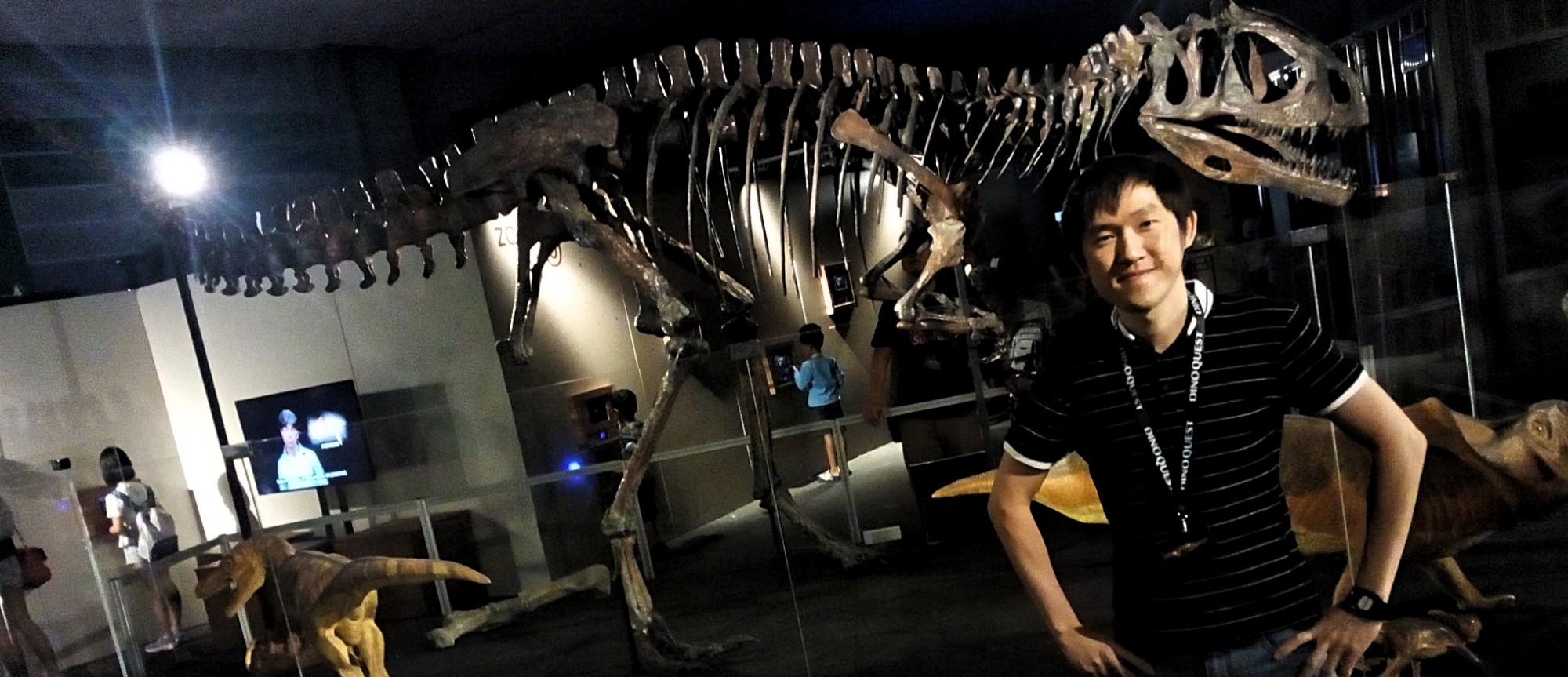
Thank you for your interest in this book. You will notice some language issue for sure but just focus on core concepts within this book that I wish to present to you as my native language is not English and I’m also not an English teacher.
As always, if you do not know about me, I am a surfactant chemist, and also consider a science writer that amateur study some private source fossil. As museum fossil is only accessible by relevant scholar and curator, of course, I need to own the fossil in order to get a full access and study them in detail, and also obtain a full copyright to enable me publish them without any copyright infringement as large amount of internet source have copyright restriction. But each relative dinosaur study is unable to completely avoid the copyright issue as some reference is interrelated, especially for side by side structure comparison, so I will try my best to using a redrawing method and properly indicate the drawing reference to minimize the issue as possible as I can.
Kindly take note that I do not have Paleontology background, all the idea within this book mostly based on logical inference, and might have conflict with mainstream Paleontology you learn from University. And last, I hope you enjoy this book as we are all dinosaur lover and try to restore these prehistoric animal as much as we can. Thank you and enjoy!
Spinosaurid in Sahara Desert
![Dorsal neural spine (BSP 1912 VIII 19)[1] Spinosaurus aegyptiacus from Egypt](https://petrifiedembryology.files.wordpress.com/2022/04/fig-1s.jpg)
Figure 1. Dorsal neural spine (BSP 1912 VIII 19)[1] Spinosaurus aegyptiacus from Egypt.
Spinosaurid is the most common dinosaur found in Sahara Desert of Morocco among other dinosaur. It cannot be denying, they are some evidence shows they might exist few different species sharing the same continent, like existing seal and crocodile. Even though they are common, compare to other theropods, but the unearthed specimen mostly scattered, only in small quantity, and most of the time is mix with other dinosaur bone which makes the identification become more complicated. This is how until today, the forelimb of Spinosaurus are yet to be found, and most of the forearm restoration study are based on the Suchomimus.
To find out this, I have come across the various commercial specimens to searching the clue, and hopefully could find out some associated specimen to further complete the missing link of this interesting dinosaur.
Here, we introduce to you a unique forelimb (radius) of Spinosaurid, which associated found together with other body skeleton which made the calculation study possible. They are found in five specimens, with one cervical vertebra, one dorsal vertebra, two caudal vertebrae and one radius bone. Unfortunately, I only successfully to recover four of them, one of them are taking by other collector but I will leave its original photo here for reference. The detail locally of these specimens is not known, the only thing for sure is coming from Kem Kem beds of Morocco, because most of the dealer are not interested in recording the detail information about the fossil when trading large amount of common fossils.
The specimens are heavy, solid, and fragile in external surface. I have partially clean the specimens, but not all, in order to coating some glue to protect the surface, which you may found some glossy or minor color difference in photo, which is normal because is reflect by the glue coating above surface. Due to I’m only have limited of time to study these fossil, so, the specimens I decide to leave it as it is. The second specimen belong to associated cervical vertebra and the maxillary tooth, which can be used to reconfirm the skull length and the neck ratio together with tooth. Both specimens are found in the Morocco as shown below.

Figure 2. Type locality of specimens Alpha Male 9109 (Nick name) and Sigma Neck 8997 (Nick name). Both fossil remains unearthed from Kem Kem beds of Morocco.
Specimen Alpha Male 9109
Alpha Male 9109 (Nick name) is a potential associated fossil remain of huge sub adult Spinosaurid that consists of 5 specimens including radius (forearm, GCE2104204947), mid cervical vertebra (neck, GCE2104138334), mid dorsal vertebra (body, GCE2104133945), proximal caudal vertebra (tail, GCE2104146785), and mid caudal vertebra (tail, R393243465120-2104). All of them belong to the same lot coming from the same excavation location. Commercial Spinosaurid specimen bigger than 5 inch (in terms of vertebrae centrum) is consider vary rare to be found, and the 5 massive specimens discuss below is likely belong to the same individual, under my examination, including its centrum size. Although cannot be 100% sure but the according to the dealer they belong to same individual.
Ancient Kem Kem bed are likely locate in the area of estuaries that small river connects to the shallow sea which have a very high river current. The high stream easily destroys the articulate specimen and makes them difficult to found a complete specimen, even some of the vertebra found together, are actually belong to different species or individual if they are hunt in groups, or carry by water flow from other location. Below, we discuss the first specimen call Alpha Male 9109, a sub adult Spinosaurid almost as big (probably slightly smaller as I do not have its scale for comparison) as specimen Spinosaurus aegyptiacus neotype FSAC-KK 11888.
Nick name: Alpha Male 9109.
Reference code: consists of 5 specimens including radius (forearm, GCE2104204947), mid cervical vertebra (neck, GCE2104138334), mid dorsal vertebra (body, GCE2104133945), proximal caudal vertebra (tail, GCE2104146785), and mid caudal vertebra (tail, R393243465120-2104).
Species: Spinosaurid, based on broad cervical vertebra (or anterior dorsal vertebrae) and narrow mid or posterior dorsal vertebra, lack of well-developed pneumatic fossae and foramina, probably belong to Spinosaurus dorsojuvencus. But it still possible belong to Spinosaurus aegyptiacus neotype with individual or sexually variation.
Locality: Kem Kem, Morocco. No exact stratigraphy and locally is known.
Age: No exact information available, probably Ifezouane Formation, Cenomanian stage, Upper Cretaceous.
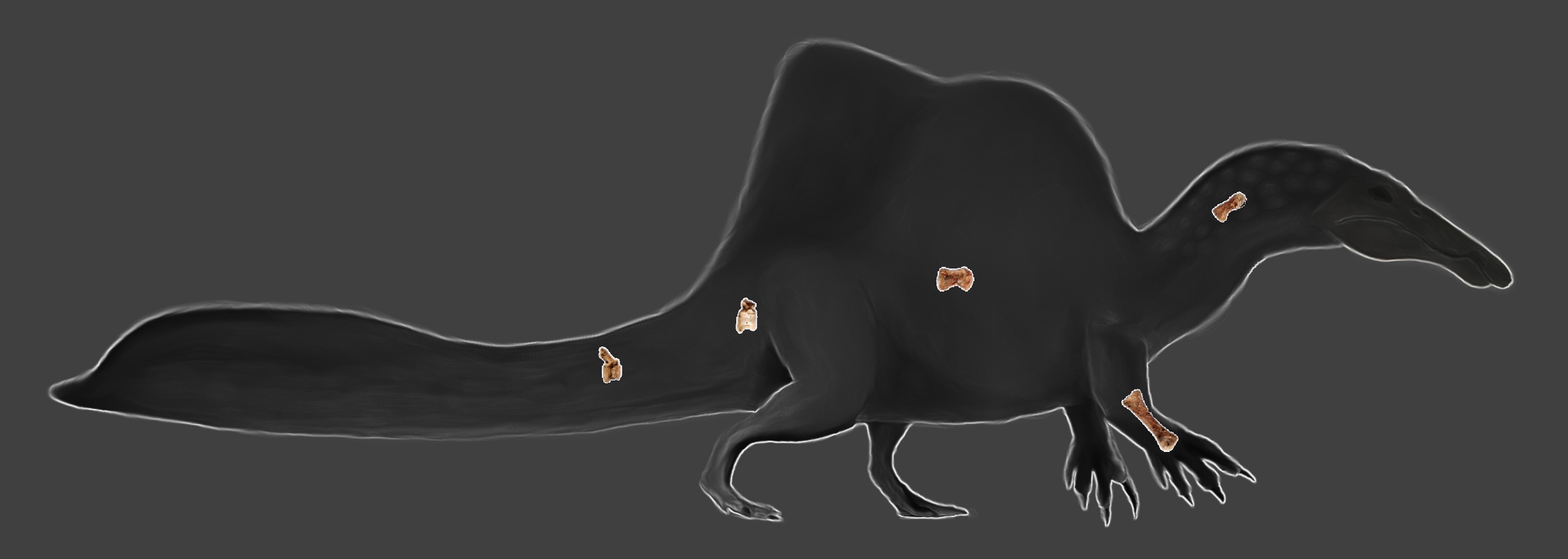
Figure 3. Selected preserved elements of Alpha Male 9109 (Nick name) and its approximate vertebra location.
Spinosaurus dorsojuvencus is new species Morocco Spinosaurid previously describe in Petrified Embryology Volume 3: The frozen baby dinosaurs – Spinosaurus dorsojuvencus release at Dec 27, 2020. Spinosaurus dorsojuvencus contain a special feature that easily identify them from typical Spinosaurid which have elongated premaxilla (it may also just belong to thicker skin in front of premaxilla) and pose a broad body in anterior area (bison-backed), and slowly turn to thin and tall along the distal part. It has a massive forearm and probably contain a cervical scute. As Spinosaurus dorsojuvencus is describe through an unborn mummified embryo specimen, it probably has shorter anterior dorsal spine (or yet well developed on the embryo) than typical Spinosaurus aegyptiacus from Egypt.
Systematic paleontology
Dinosauria Owen, 1842
Saurischia Seeley, 1887
Aliacollisauria Goo, 2020
Spinosauridae Stromer, 1915
Spinosaurus dorsojuvencus, Goo, 2020
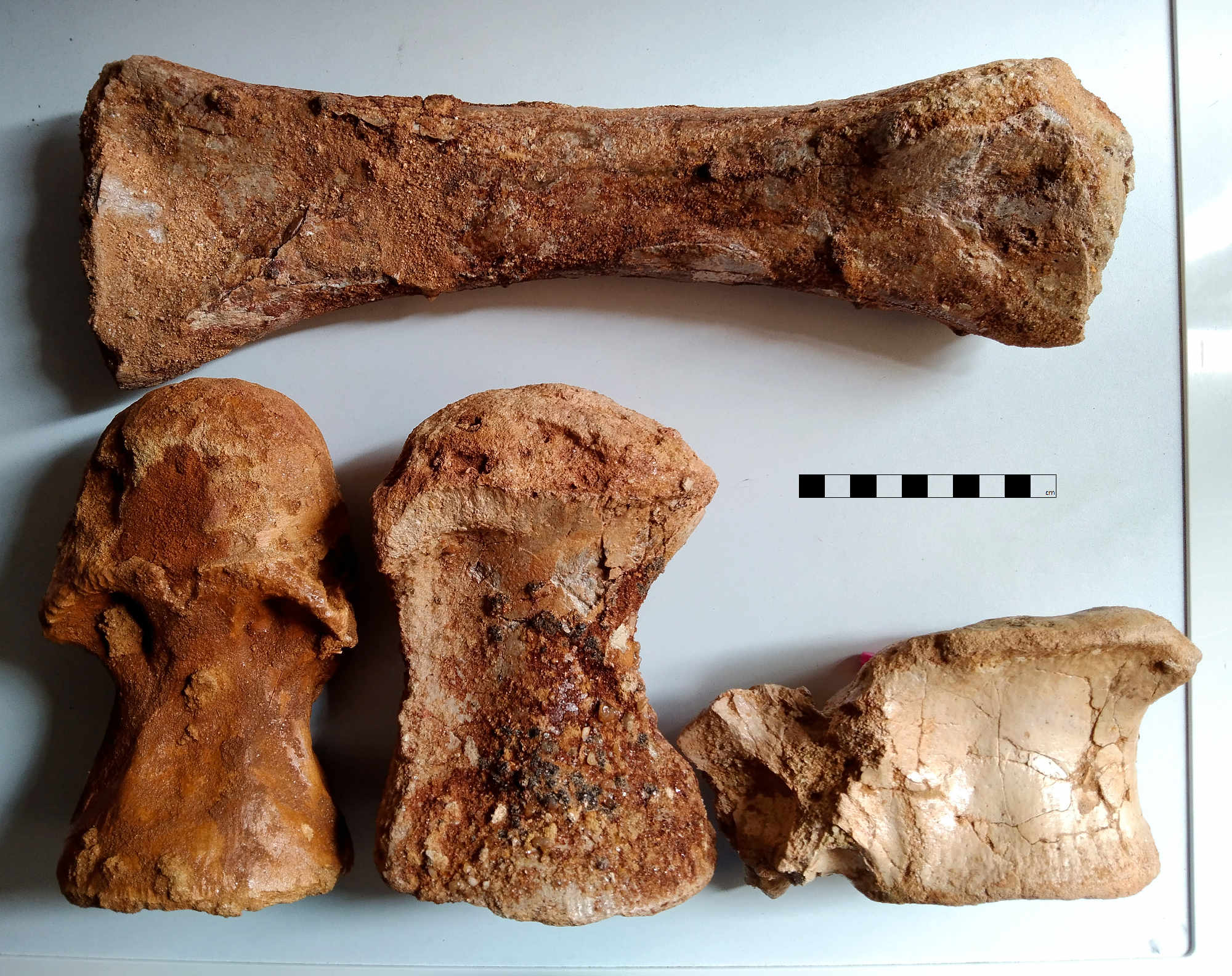
Figure 4. An overall size comparison of preserved elements of Alpha Male 9109 (Nick name) without any editing. The surface of vertebra is coating with different level of glue for stabilization purpose. Scale bars represent 10 cm.
Figure 4 show an overall available specimen (exclude one mid caudal vertebra) of specimen Alpha Male 9109, which provided an idea the similar in total length of cervical and the dorsal vertebra. Based on this observation, the restoration of limb bone of entire dinosaur is possible when isolated limb bone is at least found together with one vertebra.
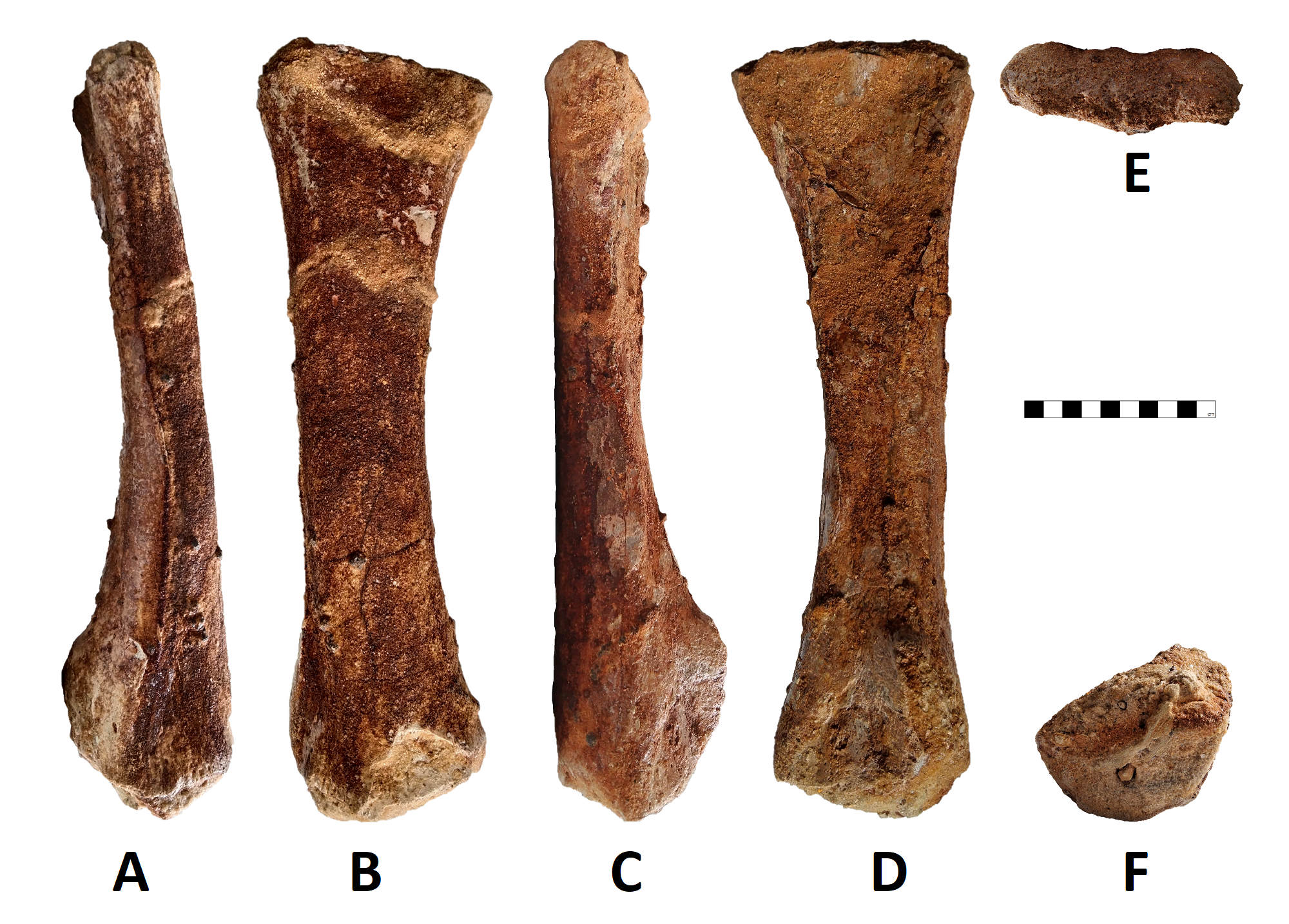
Figure 5. Left radius (GCE2104204947) of Spinosaurid tentatively refer as Spinosaurus dorsojuvencus. Start viewing at the back and turn clockwise: A. posterior view (backside); B. lateral view (side view); C. anterior view (front view); D. medial view (internal side); E. proximal view (top view); F. distal view (bottom view). Scale bars represent 10 cm.

Figure 6. Mid cervical (estimated vertebra location: C5) vertebra (GCE2104138334) of Spinosaurid tentatively refer as Spinosaurus dorsojuvencus. From left image: in right lateral view (side view); Right image: in left lateral view. Scale bars represent 10 cm.
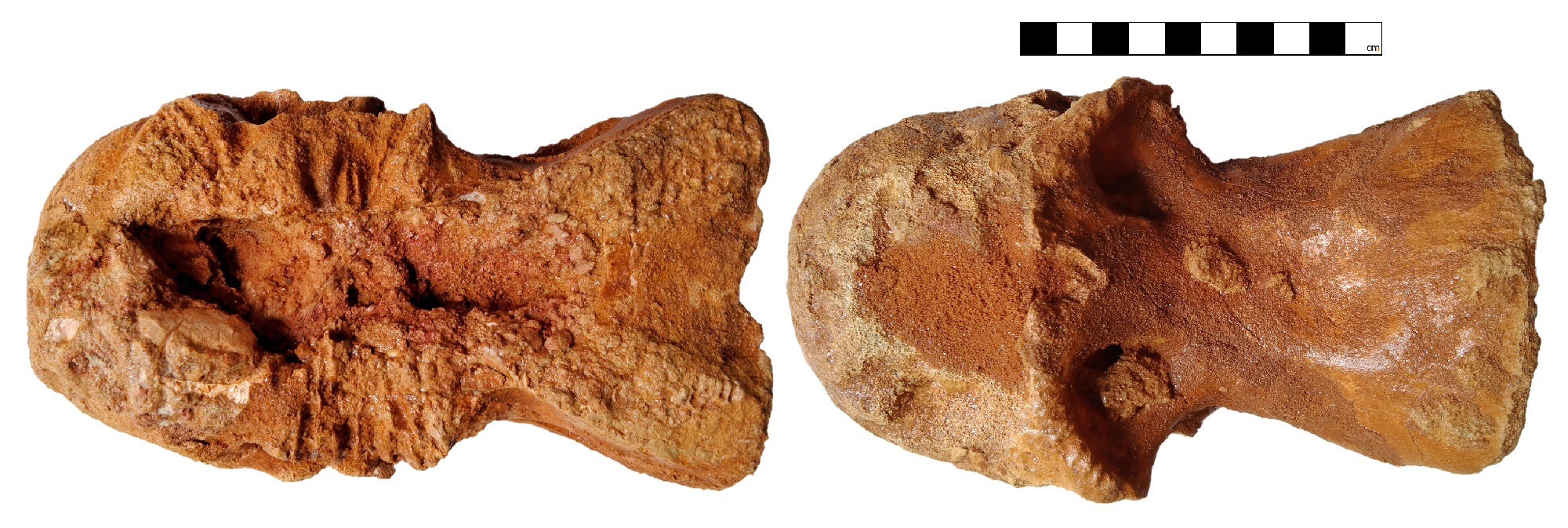
Figure 7. Mid cervical vertebra (GCE2104138334) of Spinosaurid tentatively refer as Spinosaurus dorsojuvencus. From left image: in dorsal view (top view, anterior face to the left); Right image: in ventral view (bottom view, anterior face to the left). Scale bars represent 10 cm.
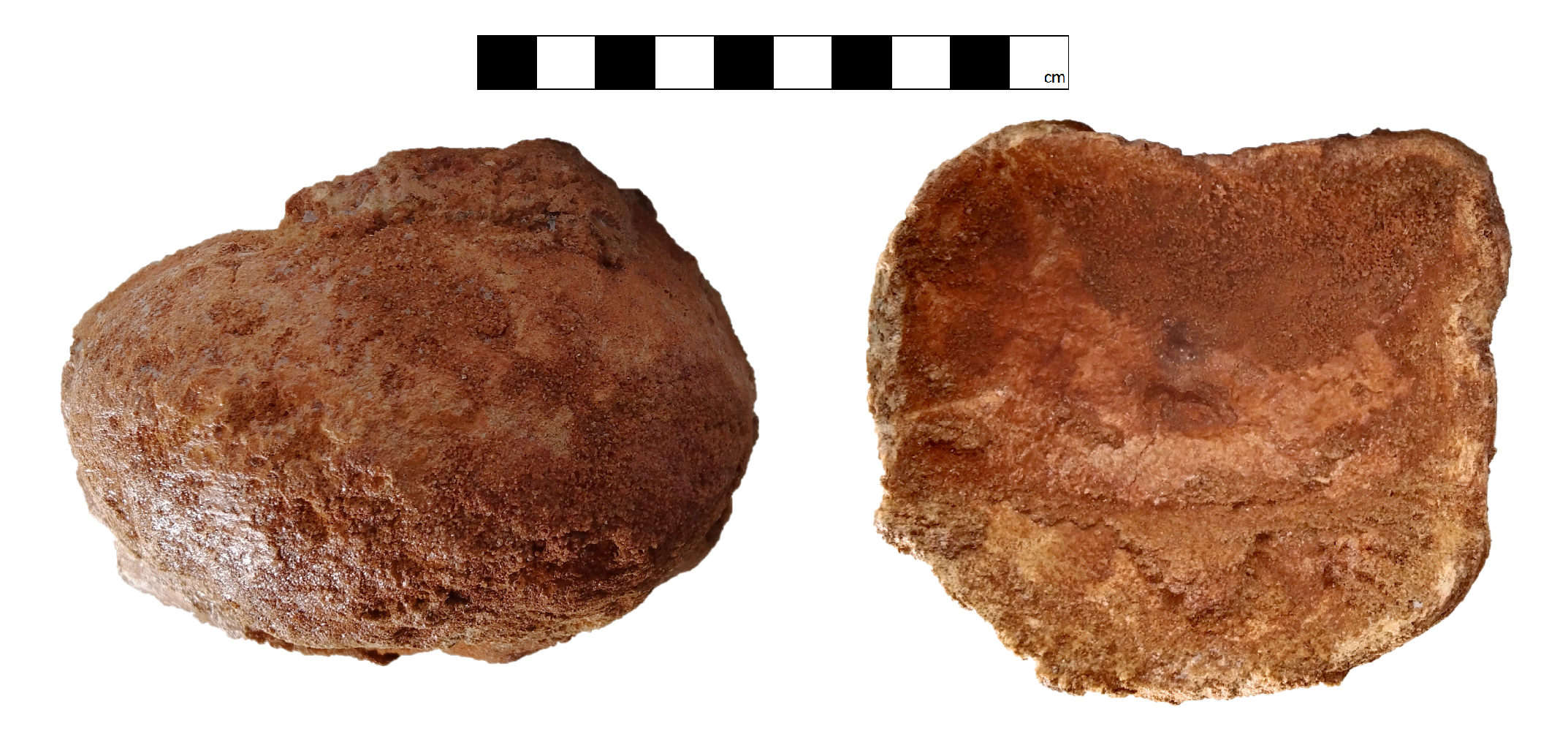
Figure 8. Mid cervical vertebra (GCE2104138334) of Spinosaurid tentatively refer as Spinosaurus dorsojuvencus. From left image: anterior view (front view); Right image: posterior view (backside view). Scale bars represent 10 cm.
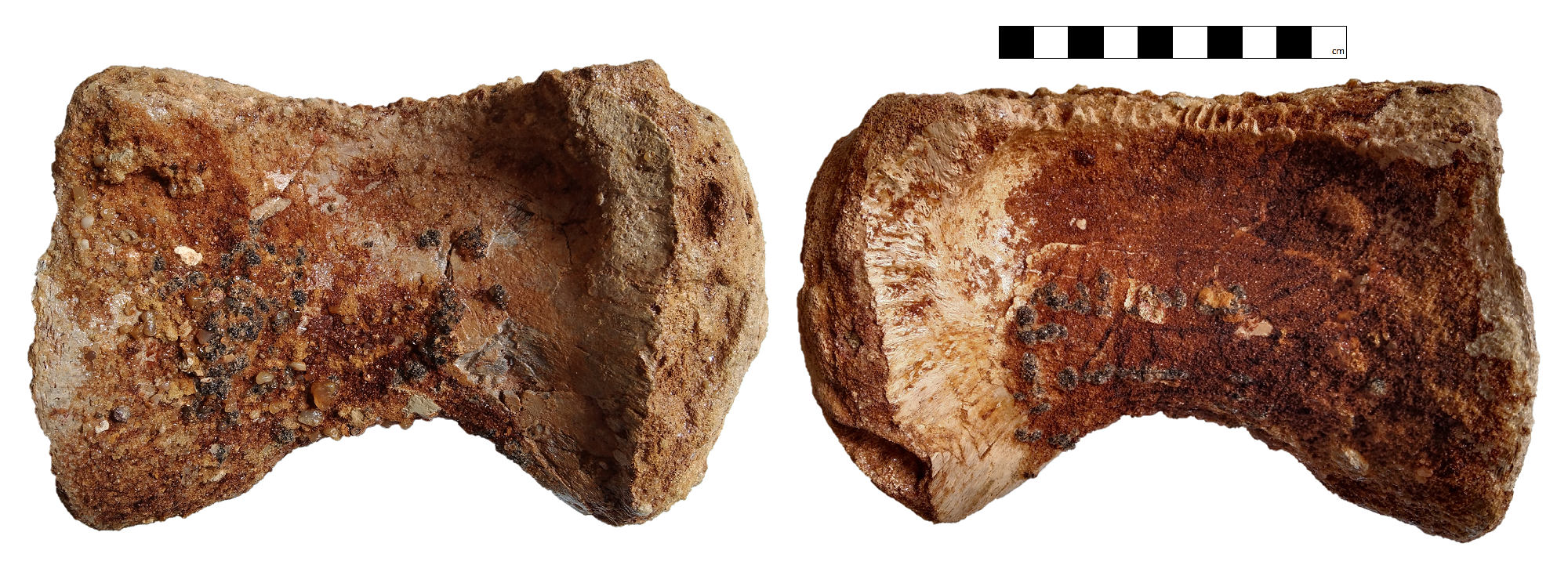
Figure 9. Mid dorsal vertebra (GCE2104133945) of Spinosaurid tentatively refer as Spinosaurus dorsojuvencus. From left image: in right lateral view (side view); Right image: in left lateral view. Scale bars represent 10 cm.

Figure 10. Mid dorsal vertebra (GCE2104133945) of Spinosaurid tentatively refer as Spinosaurus dorsojuvencus. From left image: in dorsal view (top view, anterior face to the left); Right image: in ventral view (bottom view, anterior face to the left). Scale bars represent 10 cm.
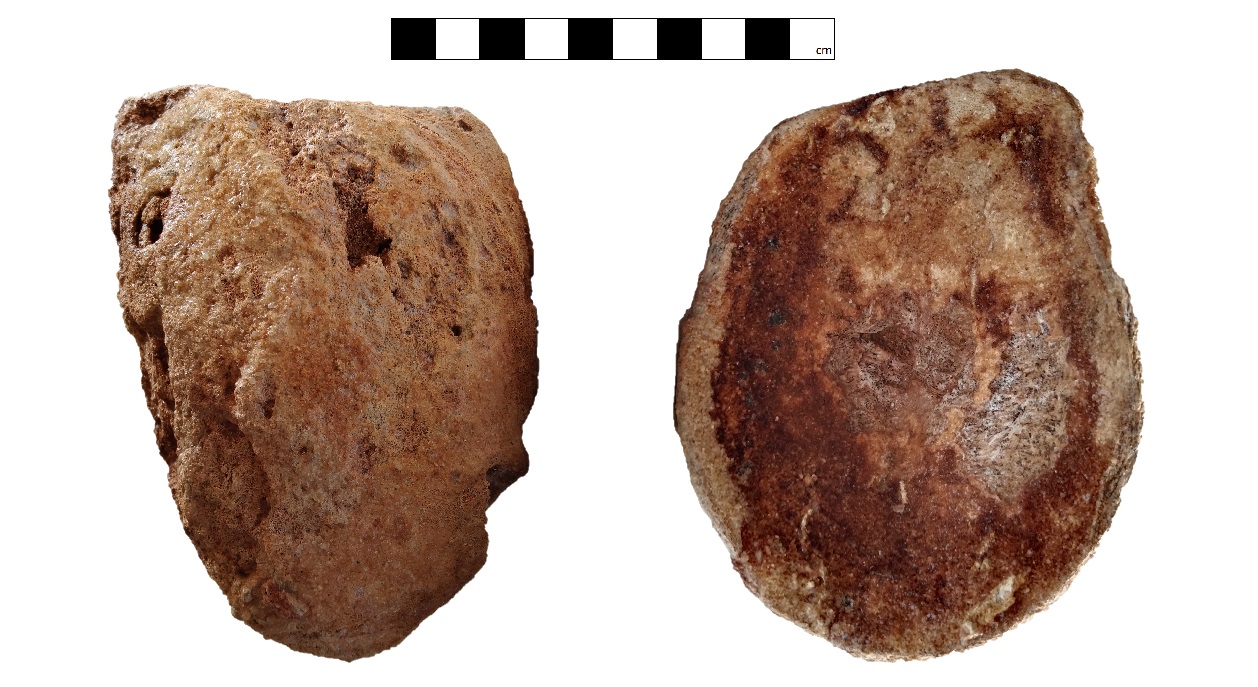
Figure 11. Mid dorsal vertebra (GCE2104133945) of Spinosaurid tentatively refer as Spinosaurus dorsojuvencus. From left image: anterior view (front view); Right image: posterior view (backside view). Scale bars represent 10 cm.
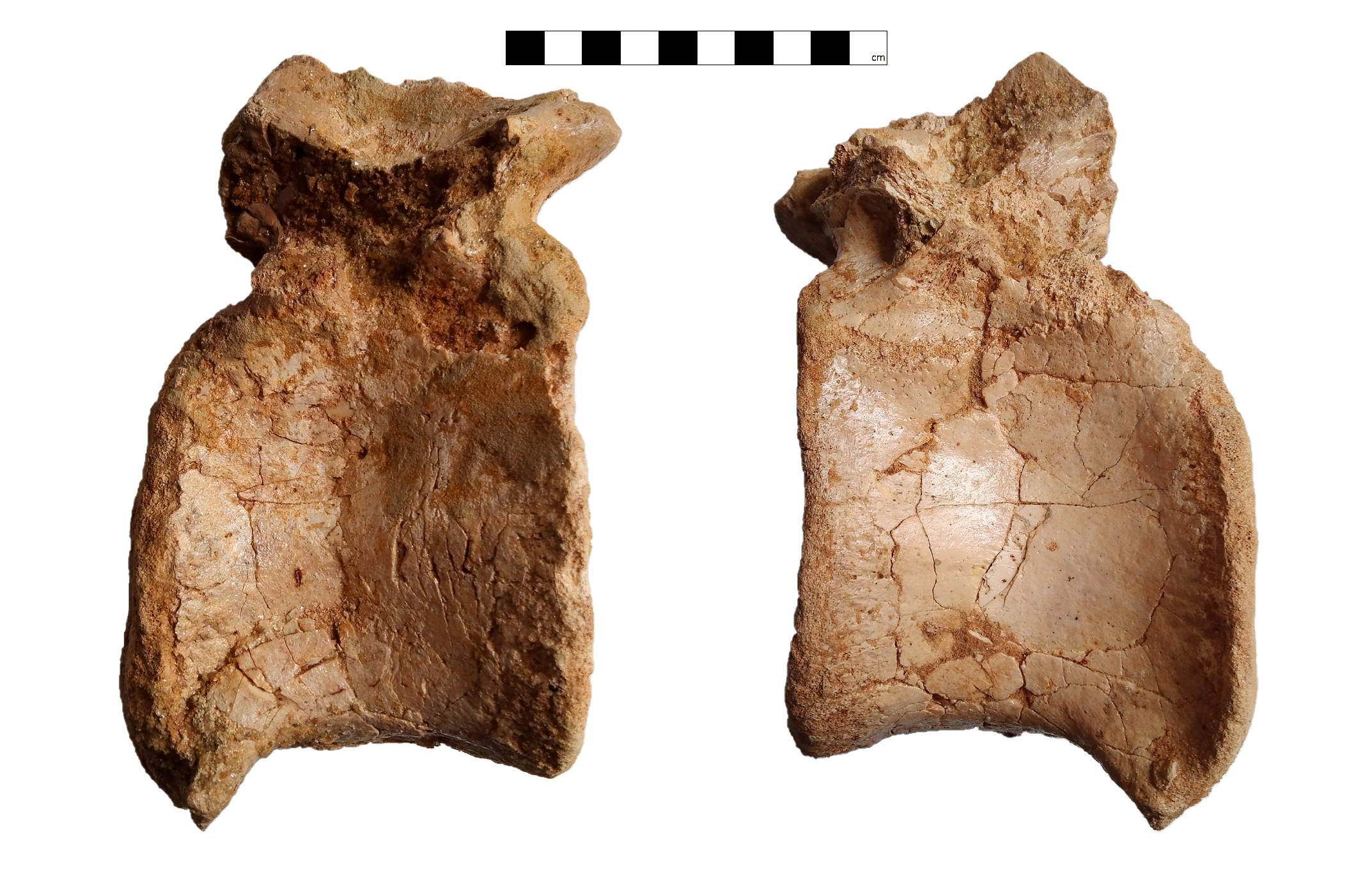
Figure 12. Proximal caudal vertebra (GCE2104146785) of Spinosaurid tentatively refer as Spinosaurus dorsojuvencus. From left image: in right lateral view (side view); Right image: in left lateral view. Scale bars represent 10 cm.
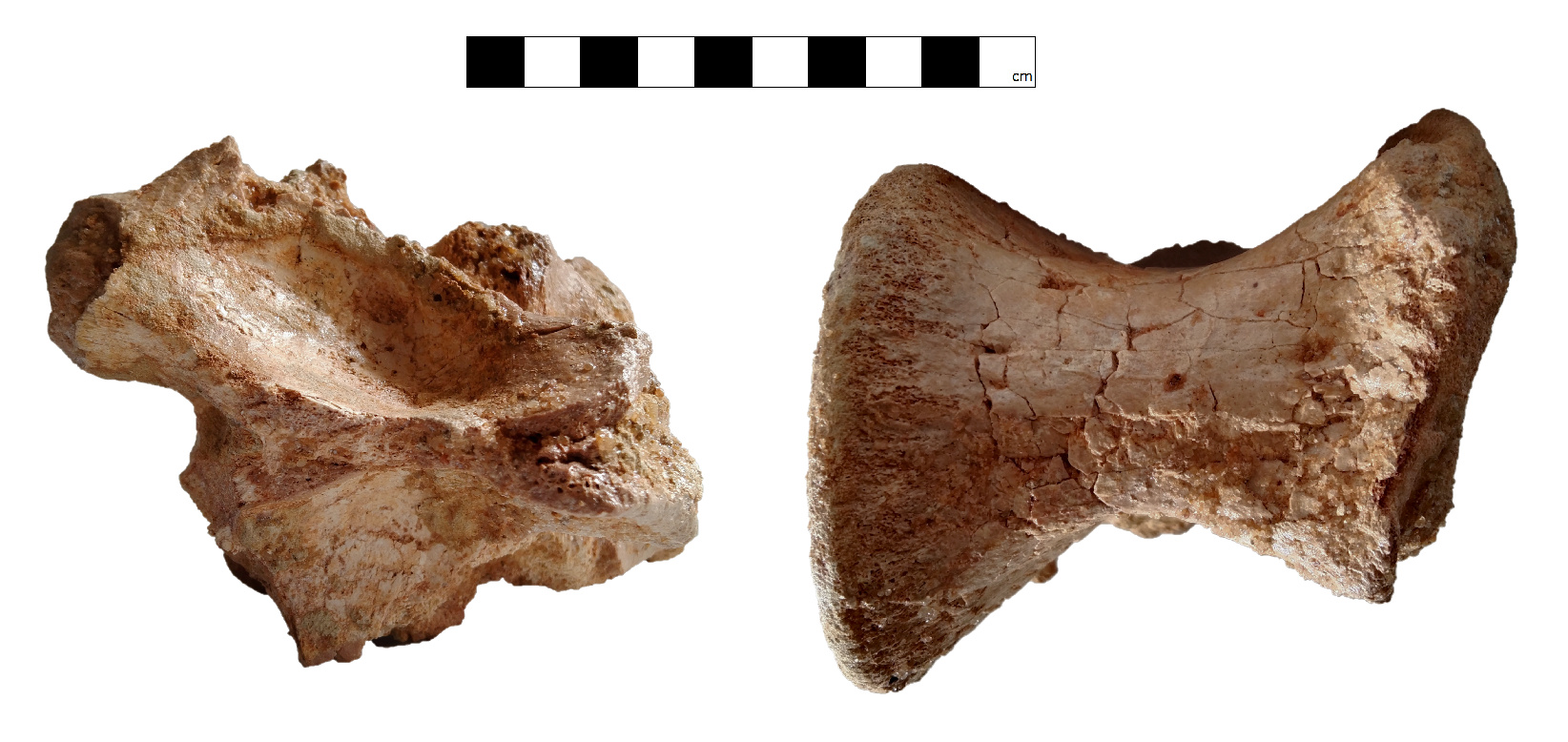
Figure 13. Proximal caudal vertebra (GCE2104146785) of Spinosaurid tentatively refer as Spinosaurus dorsojuvencus. From left image: in dorsal view (top view, anterior face to the left); Right image: in ventral view (bottom view, anterior face to the left). Scale bars represent 10 cm.
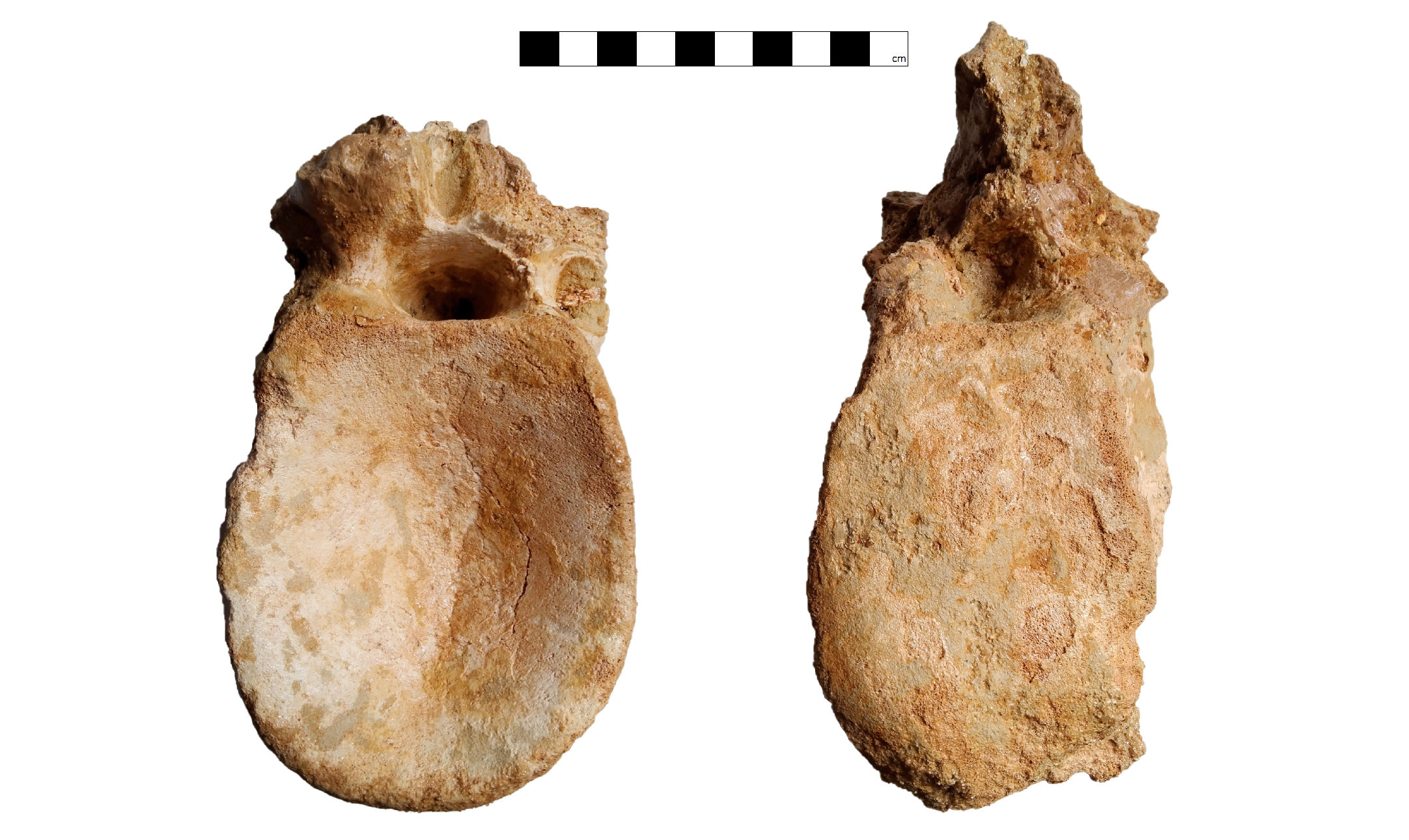
Figure 14. Proximal caudal vertebra (GCE2104146785) of Spinosaurid tentatively refer as Spinosaurus dorsojuvencus. From left image: anterior view (front view); Right image: posterior view (backside view). Scale bars represent 10 cm.
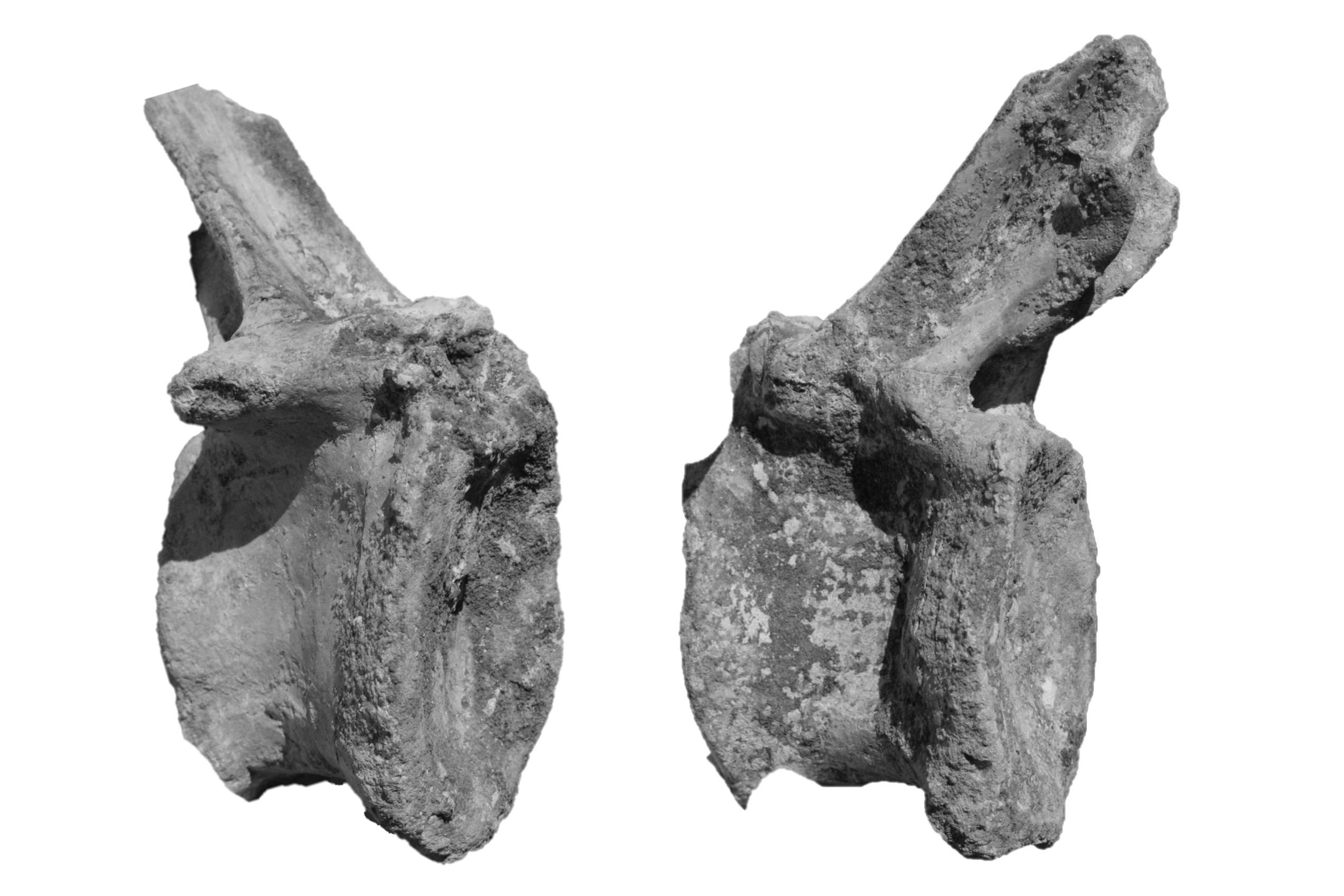
Figure 15. Mid caudal vertebra (R393243465120-2104) of Spinosaurid tentatively refer as Spinosaurus dorsojuvencus. From left image: in right lateral view (side view); Right image: in left lateral view. Scale bars represent 10 cm.
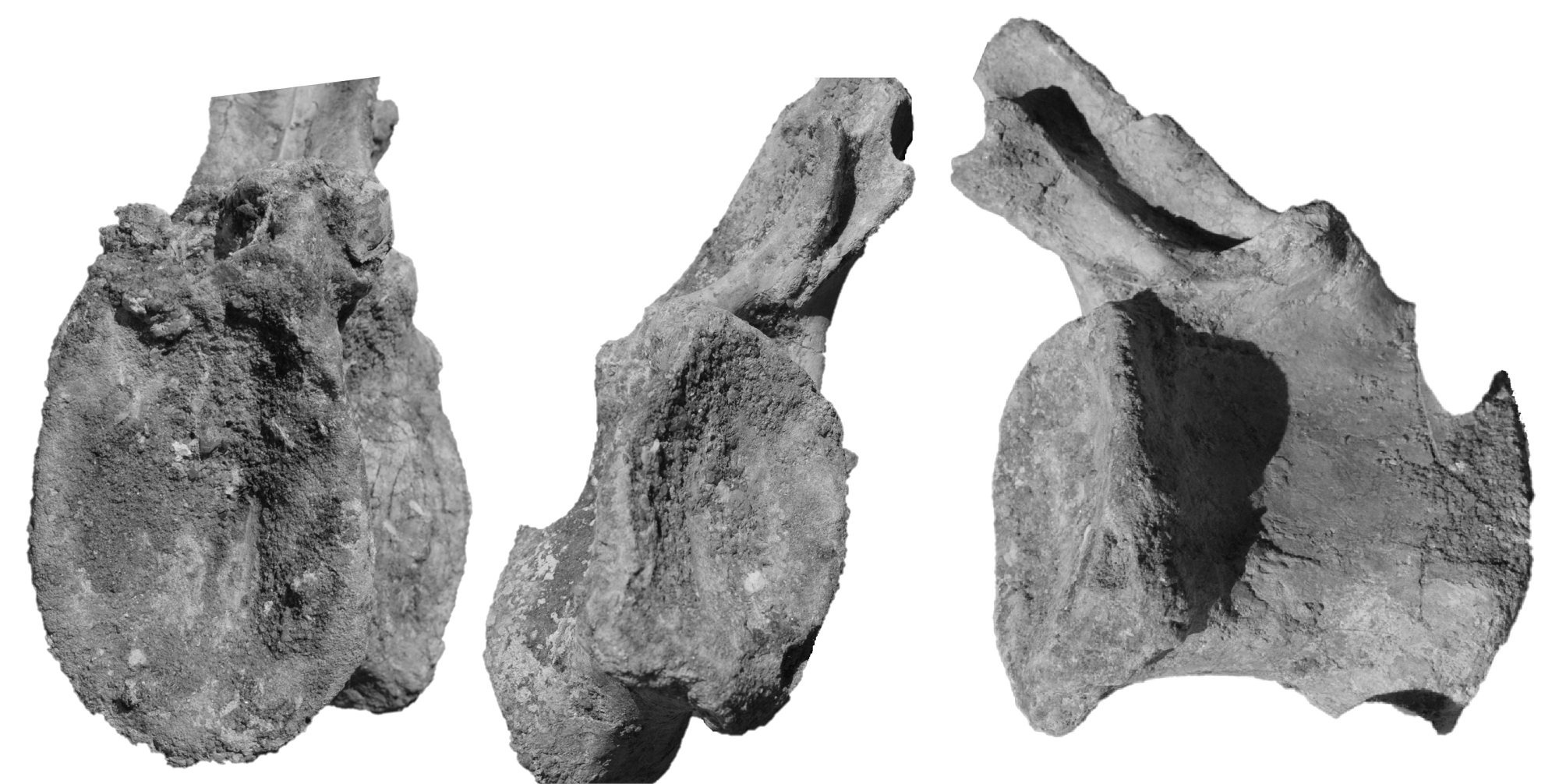
Figure 16. Mid caudal vertebra (R393243465120-2104) of Spinosaurid tentatively refer as Spinosaurus dorsojuvencus. From left image: anterior view (front view); Middle image: posterior view (backside view); Right image: in right lateral view (side view). Middle and right image provide a roughly idea of how the posterior view look like. Scale bars represent 10 cm.
The incomplete photo in Figure 15 and 16 are original photo for mid caudal vertebra (R393243465120-2104) leaving here for reference. It shows an important clue that Spinosaurus dorsojuvencus has lesser pneumatic structure development on its vertebra centrum after the anterior dorsal vertebra.
Specimen Sigma Neck 8997
Sigma Neck 8997 is another specimen come from different excavation site, but its morphology seems to be similar to Alpha Male 9109 which will be discuss at next chapter based on comparative analysis to classified its relative taxonomy. Complete Spinosaurus tooth found intact with its jaw or vertebra is consider very rare, and some of the crocodilian species also evolve a very sharp and elongated tooth similar as Spinosaurus which make differentiation between Spinosaurus and crocodilian tooth become difficult.
Nick name: Sigma Neck 8997.
Reference code: consists of 2 specimens including maxillary tooth (GCE2105098997B) and anterior cervical vertebra (neck, GCE2105098997A), probably C2 position.
Species: Spinosaurid, probably belong to Spinosaurus dorsojuvencus. But it still possible belong to Spinosaurus aegyptiacus neotype.
Locality: Red sandstone beds, Taouz, Kem Kem, South Morocco. No exact stratigraphy and locally is known.
Age: No exact information available, probably Ifezouane Formation, Cenomanian stage, Upper Cretaceous.
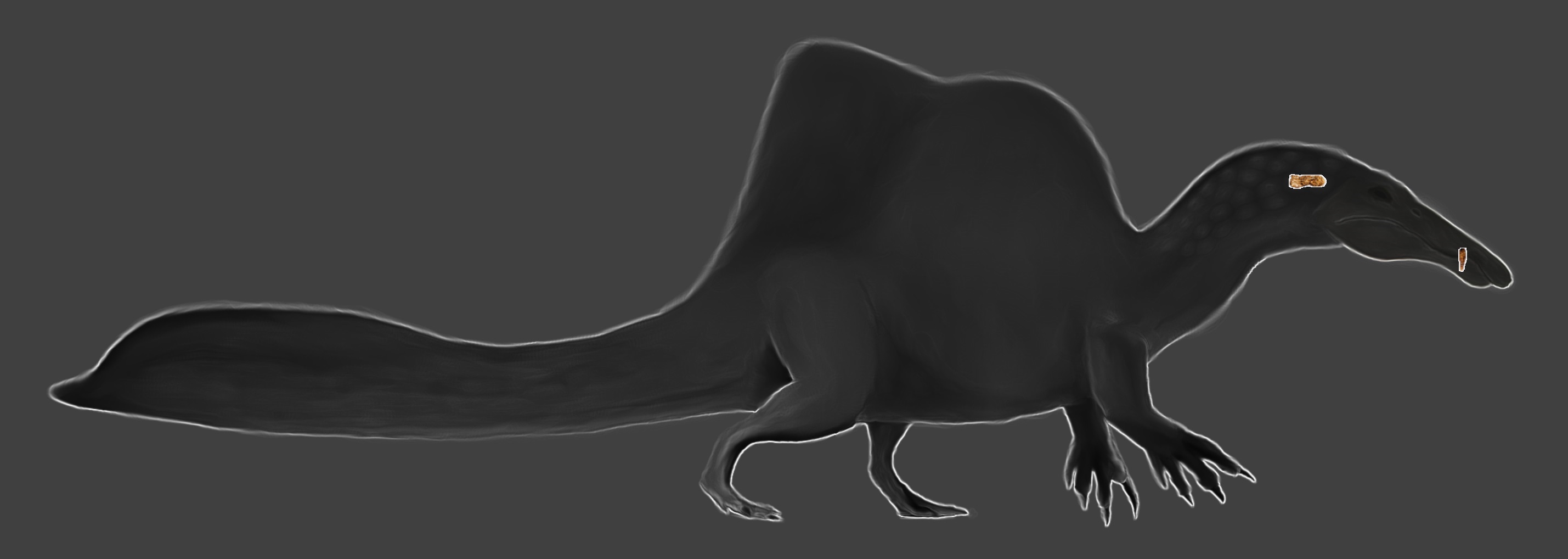
Figure 17. Selected preserved elements of Sigma Neck 8997 (Nick name) and its approximate location.
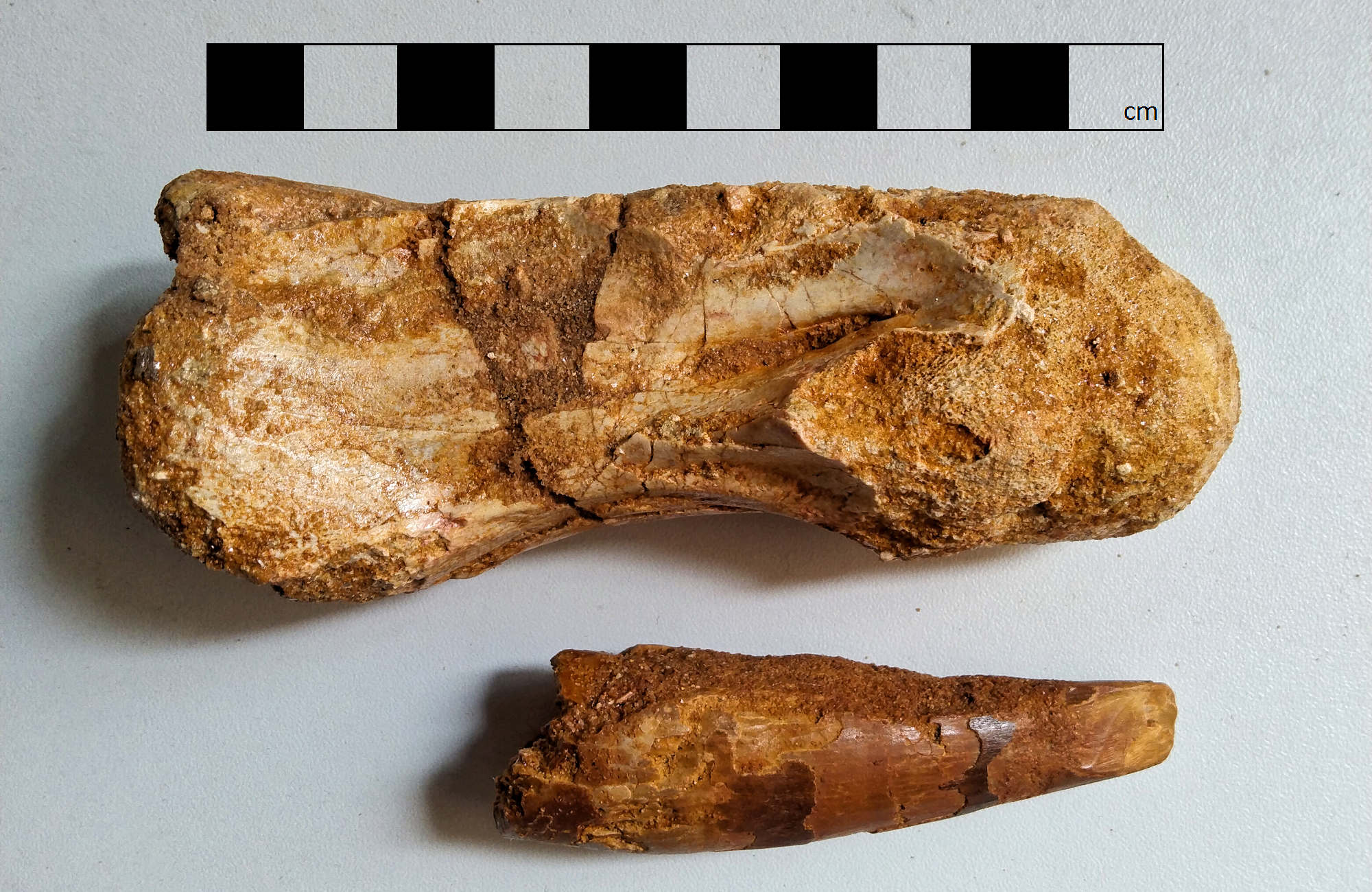
Figure 18. An overall size comparison of preserved elements of Sigma Neck 8997 (Nick name) without any editing. Scale bars represent 10 cm.
The preserved tooth in Figure 18 shows a very rare feeding wear on its tooth tip like typical sauropod tooth. Part of the crown has been removed by abrasion due to the tooth movement which can be seen in Figure 23.

Figure 19. Anterior cervical (estimated vertebra location: C2) vertebra (GCE2105098997A) of Spinosaurid tentatively refer as Spinosaurus dorsojuvencus. From left image: in right lateral view (side view); Right image: in left lateral view. Scale bars represent 10 cm.

Figure 20. Anterior cervical vertebra (GCE2105098997A) of Spinosaurid tentatively refer as Spinosaurus dorsojuvencus. From left image: in dorsal view (top view, anterior face to the left); Right image: in ventral view (bottom view, anterior face to the left). Scale bars represent 10 cm.
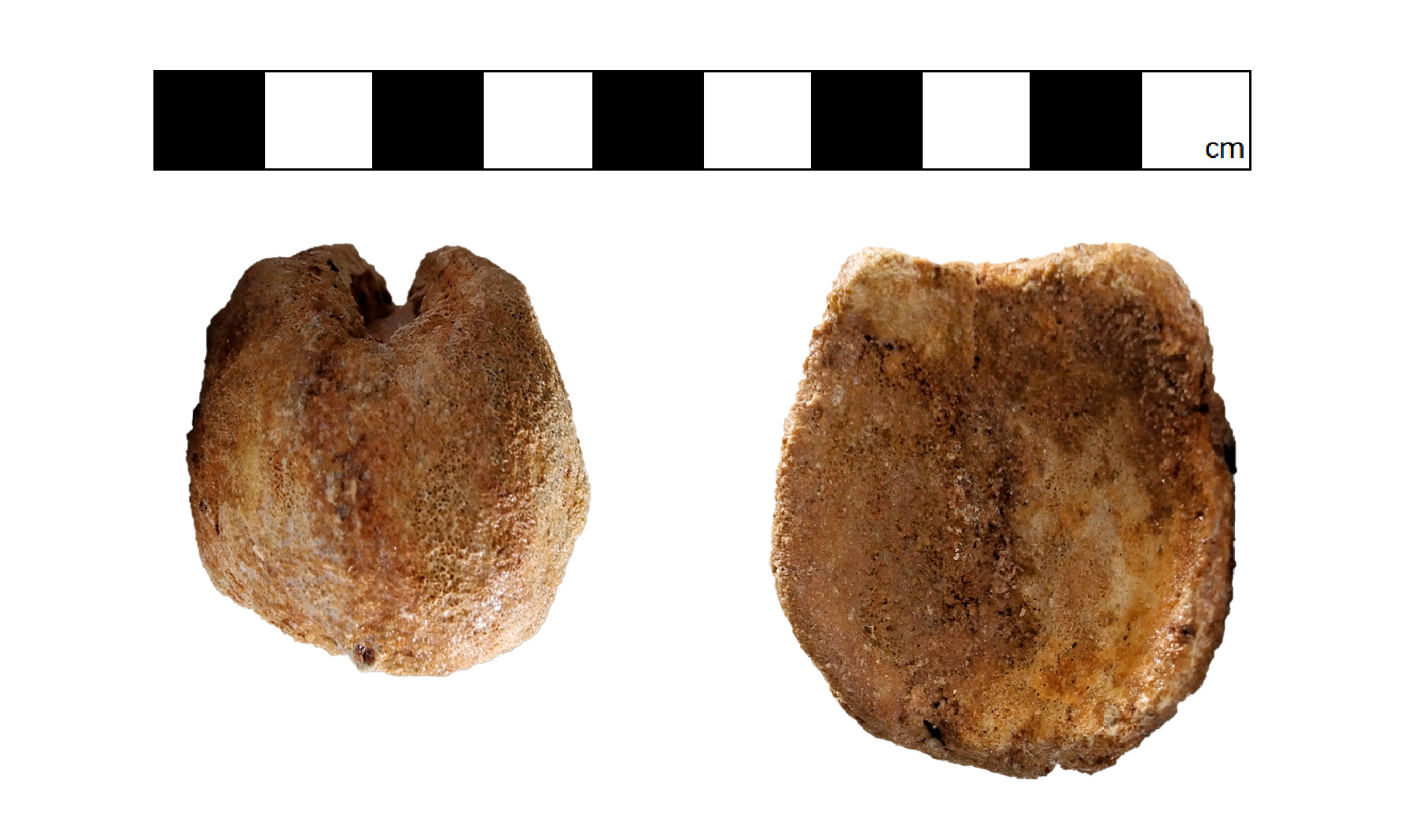
Figure 21. Anterior cervical vertebra (GCE2105098997A) of Spinosaurid tentatively refer as Spinosaurus dorsojuvencus. From left image: anterior view (front view); Right image: posterior view (backside view). Scale bars represent 10 cm.
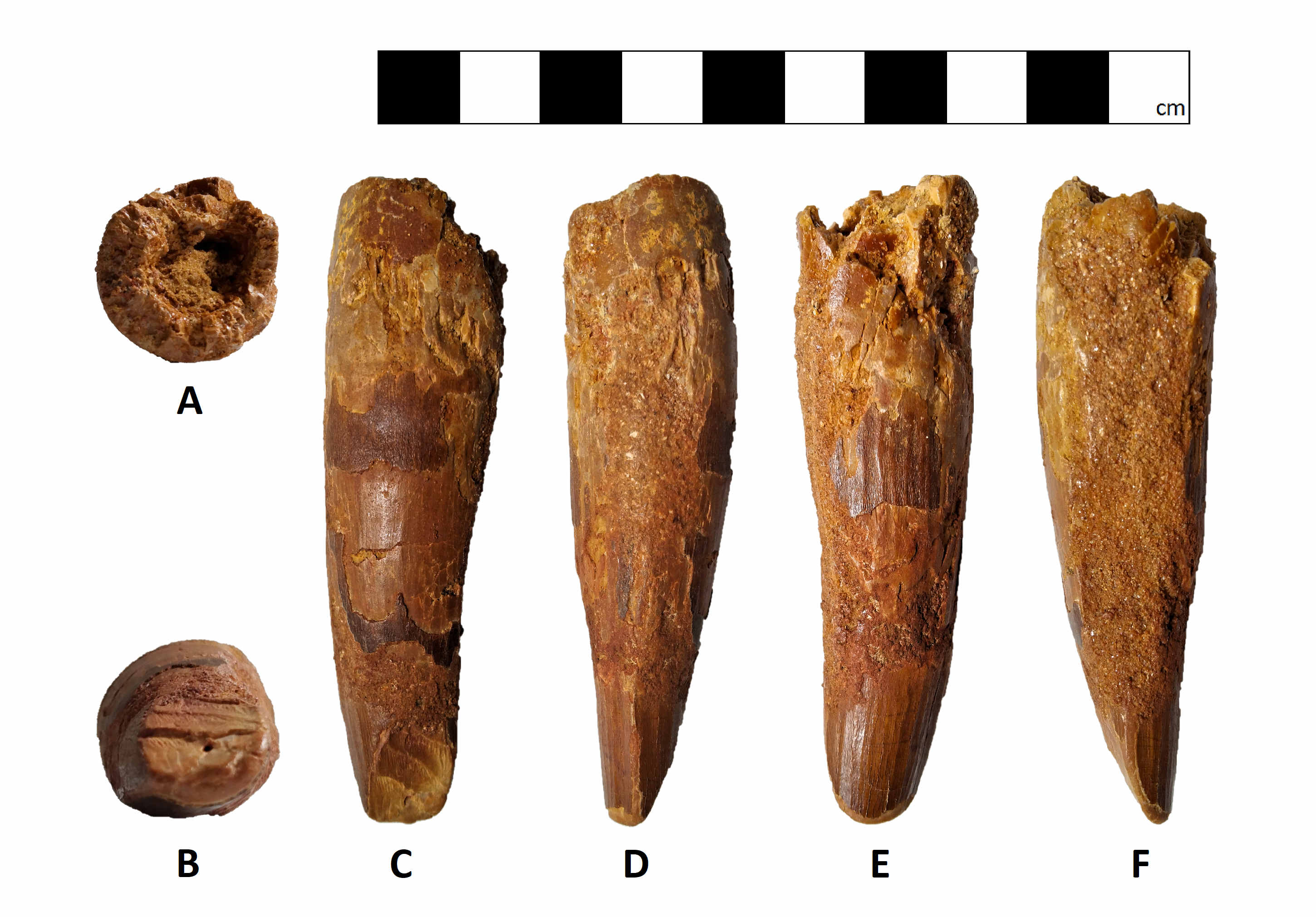
Figure 22. Probably left maxillary tooth (GCE2105098997B) of Spinosaurid tentatively refer as Spinosaurus dorsojuvencus. From bottom to top view, anticlockwise turn from outside to inside: A. In basal view; B. apical view; C. labial view; D. mesial view; E. lingual view; and F. distal view. Scale bars represent 10 cm.
![Restoration of skull[2][3] length ratio compare to anterior cervical vertebra (probably C2 position) and its relative tooth size. The skull size to vertebra is also belong to restoration ratio through various known specimens of Spinosaurid in Petrified Embryology volume 3.](https://petrifiedembryology.files.wordpress.com/2022/04/fig-23s.jpg)
Figure 23. Restoration of skull[2][3] length ratio compare to anterior cervical vertebra (probably C2 position) and its relative tooth size. The skull size to vertebra is also belong to restoration ratio through various known specimens of Spinosaurid in Petrified Embryology volume 3.
Is Alpha Male 9109 and Sigma Neck 8997 belonging to same species?
Both Alpha Male 9109 and Sigma Neck 8997 are found in different site, but both of them show a very similar morphology (refer Figure 24 & 25) which are likely belong to same species. Based on two vertebrae below, the subpneumatic fossae clearly show gradually turn visible from anterior to posterior position. The specimen GCE2105098997A (estimated C2 cervical vertebra) only show a very light formation of this structure. Please refer Figure 32 and 33 for description of subpneumatic fossae and is location.
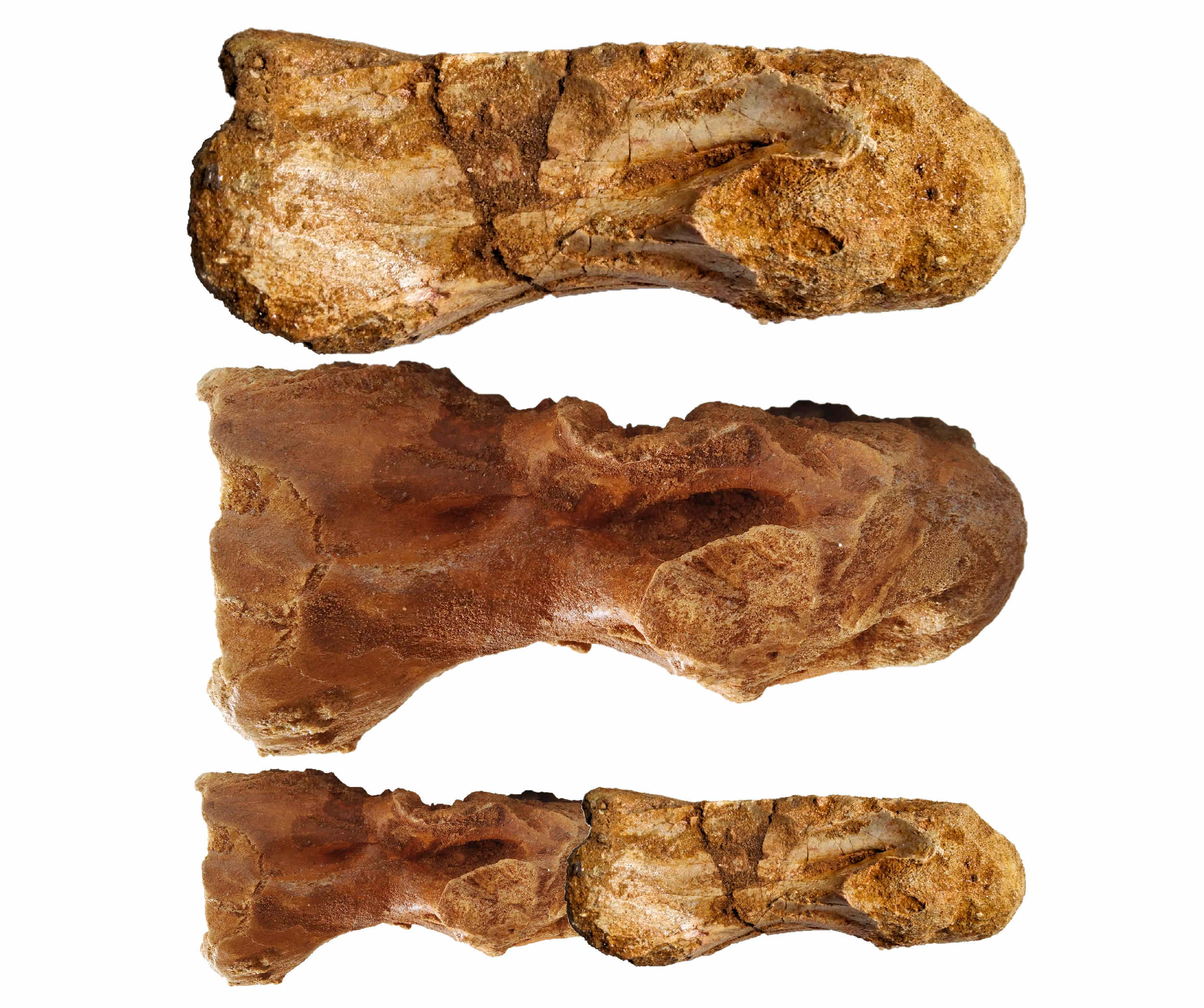
Figure 24. Side by side comparison of both anterior and mid cervical vertebrae of Sigma Neck 8997 and Alpha Male 9109. From top to bottom: Anterior cervical vertebra (GCE2105098997A) of Sigma Neck 8997; Mid cervical vertebra (GCE2104138334) of Alpha Male 9109; and serial comparison of both vertebrae in lateral view (side view).
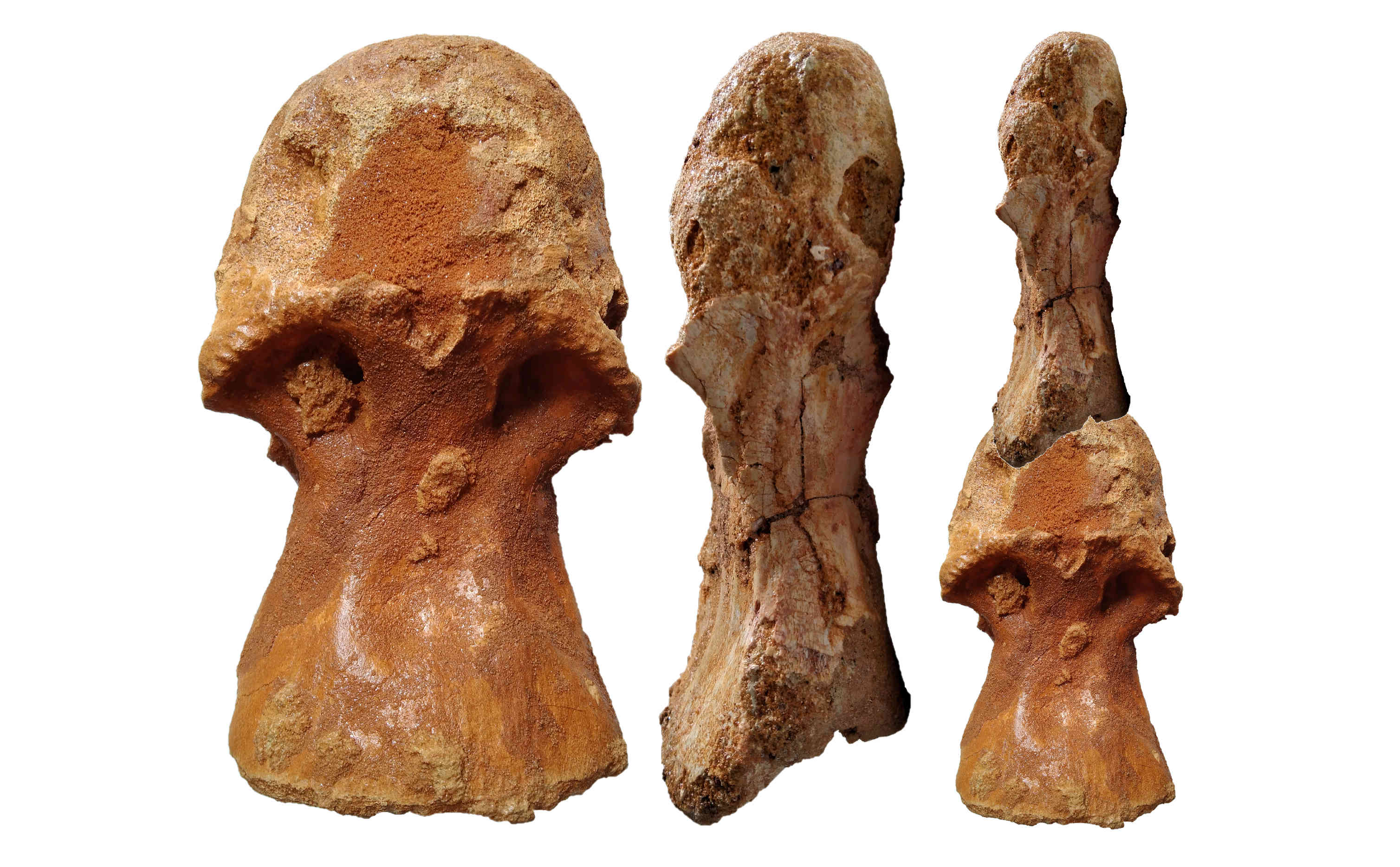
Figure 25. Side by side comparison of both mid cervical and anterior vertebrae of Alpha Male 9109 and Sigma Neck 8997. From left to right: Mid cervical vertebra (GCE2104138334) of Alpha Male 9109; Anterior cervical vertebra (GCE2105098997A) of Sigma Neck 8997; and serial comparison of both vertebrae in ventral view (bottom view).
Figure 25 show a comparison of both anterior and mid cervical vertebrae of Spinosaurid refer as same species. Under similar total length of vertebra, the rim to rim length (length from distal part of condyle until the end of the vertebra) do not show an obvious changes along the different position, but only change in vertebra surface area, which provide a clue that increasing in total surface area (under ventral view) of vertebra that close to posterior cervical vertebra and anterior dorsal vertebra area, it meet one of the description of broad bison body of Spinosaurid describe in Petrified Embryology Volume 3 refer as Spinosaurus dorsojuvencus. The cervical vertebra shows a very long condyle length for each vertebrae along entire neck, it also means Spinosaurus dorsojuvencus have a very flexible neck for hunting.
Restoration of Spinosaurid limb bone
Based on various available vertebrae discovered, Morocco Spinosaurid seem to be exist more than one species. Although complete specimen is difficult to find but we can roughly do a comparison between specimens to restore how the limb bone length of Spinosaurid. Figure 26 show a limb bone comparison between Alpha Male 9109 with neotype FSAC-KK 11888 based on dorsal vertebrae as unit length control. The restoration limb bone provides an idea Spinosaurid in Morocco have a very large and strong arm that use for hunting, and the length suggested that they are likely belong to quadrupedal and probably hunting like bear with partial siting posture (like Plateosaurus that often found in partially seated positions).
![Restoration of both forelimb and hind limbs[4] length in proportional ratio based on dorsal vertebra as standard. From top to bottom: A. anterior dorsal vertebra of Spinosaurus aegyptiacus neotype (FSAC-KK 11888); B. mid dorsal vertebra of Spinosaurid tentatively refer as Spinosaurus dorsojuvencus (Alpha Male 9109); C. radius of Alpha Male 9109; D. femur of neotype FSAC-KK 11888; E. fibula of neotype FSAC-KK 11888; and F. Tibia of neotype FSAC-KK 11888.](https://petrifiedembryology.files.wordpress.com/2022/04/fig-26l-note-s.jpg)
Figure 26. Restoration of both forelimb and hind limbs[4] length in proportional ratio based on dorsal vertebra as standard. From top to bottom: A. anterior dorsal vertebra of Spinosaurus aegyptiacus neotype (FSAC-KK 11888); B. mid dorsal vertebra of Spinosaurid tentatively refer as Spinosaurus dorsojuvencus (Alpha Male 9109); C. radius of Alpha Male 9109; D. femur of neotype FSAC-KK 11888; E. fibula of neotype FSAC-KK 11888; and F. Tibia of neotype FSAC-KK 11888.
Like the Figure 26 showing above, the Spinosaurid limb bone can be simplified into ratio Dorsal vertebra:Radius:Femur:Fibula:Tibia as 1:2.1:3.1:2.9:3 approximate. The length of radius is only 67.74% of femur length. The ratio of vertebra to limb bone is important to use as restoration of isolated specimens found.
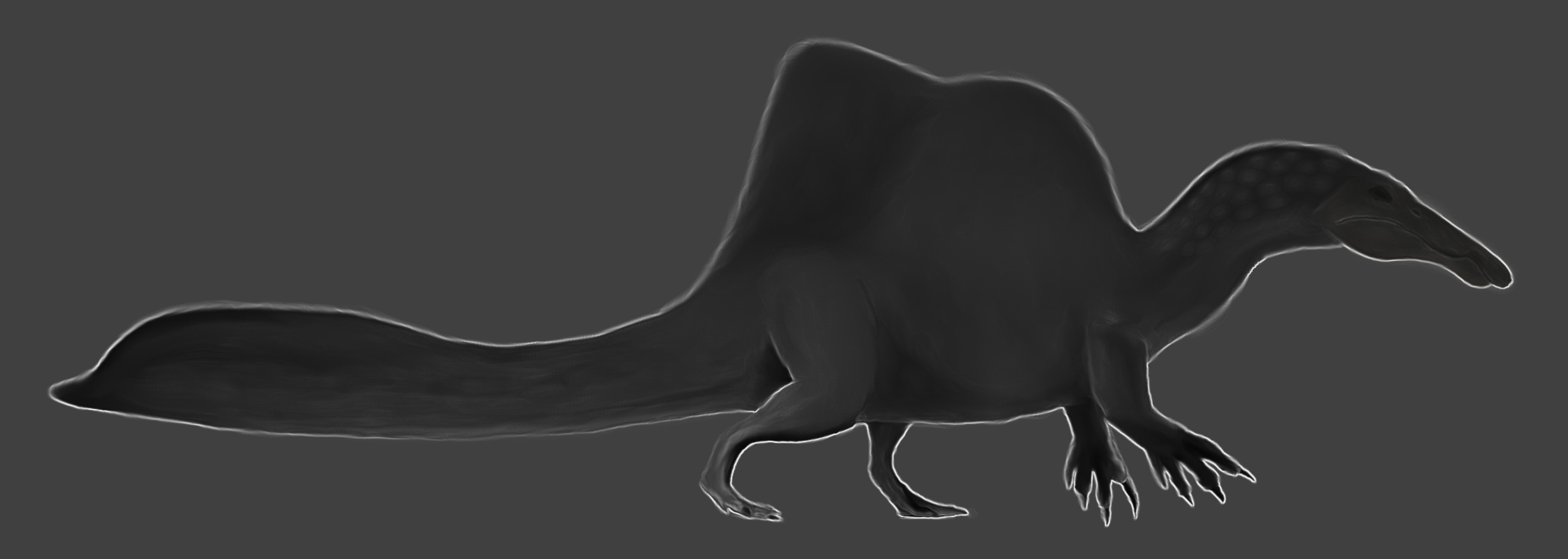
Figure 27. Reconstruction of Spinosaurus dorsojuvencus with massive forearm based on radius and femur length conclusion of Figure 26.
How to differentiate Species Alpha Male 9109 (tentatively refer as Spinosaurus dorsojuvencus) with Neotype FSAC-KK 11888 (or some refer as Spinosaurus maroccanus)?
If you closely study on vertebra morphology of Neotype FSAC-KK 11888, you will realize that the Neotype FSAC-KK 11888 is species with highly development with pneumatic aerobic structure on its vertebra centrum, and is obviously visible in its dorsal vertebra (body) and the caudal vertebra (tail). Unfortunately, I do not have opportunity to closely study cervical vertebra of FSAC-KK 11888, but comparison the rest of its vertebra morphology with Alpha Male 9109 below will help you differentiate its major difference! Based on its anterior-mid dorsal vertebra show on Figure 28, the cervical vertebra of Neotype FSAC-KK 11888 is estimate belong to narrow type (in ventral view, compare to broad type cervical vertebra of Alpha Male 9109 show on Figure 7).
![Side by side comparison of anterior-mid dorsal vertebra Spinosaurus aegyptiacus neotype (FSAC-KK 11888)[4] with Alpha Male 9109 (tentatively refer as Spinosaurus dorsojuvencus). From left to right: A. Anterior-mid dorsal vertebra of Spinosaurus aegyptiacus neotype (FSAC-KK 11888) in left lateral view; B. Anterior-mid dorsal vertebra of Spinosaurus aegyptiacus neotype (FSAC-KK 11888) in left lateral view; C. Mid dorsal vertebra (GCE2104133945) of Alpha Male 9109 (tentatively refer as Spinosaurus dorsojuvencus) in left lateral view. Pneumatic fossae strongly develop on neotype with obvious cylinder shape centrum compare to Alpha Male 9109.](https://petrifiedembryology.files.wordpress.com/2022/04/fig-28-note-s.jpg)
Figure 28. Side by side comparison of anterior-mid dorsal vertebra Spinosaurus aegyptiacus neotype (FSAC-KK 11888)[4] with Alpha Male 9109 (tentatively refer as Spinosaurus dorsojuvencus). From left to right: A. Anterior-mid dorsal vertebra of Spinosaurus aegyptiacus neotype (FSAC-KK 11888) in left lateral view; B. Anterior-mid dorsal vertebra of Spinosaurus aegyptiacus neotype (FSAC-KK 11888) in left lateral view; C. Mid dorsal vertebra (GCE2104133945) of Alpha Male 9109 (tentatively refer as Spinosaurus dorsojuvencus) in left lateral view. Pneumatic fossae strongly develop on neotype with obvious cylinder shape centrum compare to Alpha Male 9109.
![Side by side comparison of both mid caudal vertebrae of Alpha Male 9109 (tentatively refer as Spinosaurus dorsojuvencus) and Spinosaurus aegyptiacus neotype (FSAC-KK 11888)[5][6]. From left to right: A. Mid caudal vertebra (R393243465120) of Alpha Male 9109 in right lateral view, vertebra centrum appears flat without pneumatic fossae; B. Mid caudal vertebra (FSAC-KK 11888, refer as position Ca16) in right lateral view (flipped image), top portion centrum of vertebra contains pneumatic fossae.](https://petrifiedembryology.files.wordpress.com/2022/05/fig-29-note-sm.jpg)
Figure 29. Side by side comparison of both mid caudal vertebrae of Alpha Male 9109 (tentatively refer as Spinosaurus dorsojuvencus) and Spinosaurus aegyptiacus neotype (FSAC-KK 11888)[5][6]. From left to right: A. Mid caudal vertebra (R393243465120) of Alpha Male 9109 in right lateral view, vertebra centrum appears flat without pneumatic fossae; B. Mid caudal vertebra (FSAC-KK 11888, refer as position Ca16) in right lateral view (flipped image), top portion centrum of vertebra contains pneumatic fossae.
![Side by side comparison of both distal caudal (close to the end of the tail) vertebrae of Morocco Spinosaurid probably similar species as Alpha Male 9109 (tentatively refer as Spinosaurus dorsojuvencus) and Spinosaurus aegyptiacus neotype (FSAC-KK 11888)[6][7]. From left to right: A. Distal caudal vertebra (FSAC-KK 11888, refer as position Ca31) in right lateral view; B. Distal caudal vertebra (R175141271886-2202) of Spinosaurid probably similar species as Alpha Male 9109 in right lateral view; C. Distal caudal vertebra (R175141271886-2202) of Spinosaurid probably similar species as Alpha Male 9109 in left lateral view, the centrum appear lack of pneumatic fossae development, smooth and flat surface appearance; D. Distal caudal vertebra (FSAC-KK 11888, refer as position Ca31) in left lateral view, pneumatic fossae are well developed on vertebra centrum, the bottom centrum appear cylinder shape.](https://petrifiedembryology.files.wordpress.com/2022/05/fig-30-note-sm.jpg)
Figure 30. Side by side comparison of both distal caudal (close to the end of the tail) vertebrae of Morocco Spinosaurid probably similar species as Alpha Male 9109 (tentatively refer as Spinosaurus dorsojuvencus) and Spinosaurus aegyptiacus neotype (FSAC-KK 11888)[6][7]. From left to right: A. Distal caudal vertebra (FSAC-KK 11888, refer as position Ca31) in right lateral view; B. Distal caudal vertebra (R175141271886-2202) of Spinosaurid probably similar species as Alpha Male 9109 in right lateral view; C. Distal caudal vertebra (R175141271886-2202) of Spinosaurid probably similar species as Alpha Male 9109 in left lateral view, the centrum appear lack of pneumatic fossae development, smooth and flat surface appearance; D. Distal caudal vertebra (FSAC-KK 11888, refer as position Ca31) in left lateral view, pneumatic fossae are well developed on vertebra centrum, the bottom centrum appear cylinder shape.
![Side by side comparison of both distal caudal (close to the end of the tail) vertebrae of Morocco Spinosaurid probably similar species as Alpha Male 9109 (tentatively refer as Spinosaurus dorsojuvencus) and Spinosaurus aegyptiacus neotype (FSAC-KK 11888)[6][7]. From left to right: A. Distal caudal vertebra (R175141271886-2202) of Spinosaurid probably similar species as Alpha Male 9109 in anterior view (front view); B. Distal caudal vertebra Spinosaurus aegyptiacus neotype (FSAC-KK 11888, refer as position Ca31) in anterior view; C. Distal caudal vertebra (R175141271886-2202) of Spinosaurid probably similar species as Alpha Male 9109 in posterior view (backside view); D. Distal caudal vertebra Spinosaurus aegyptiacus neotype (FSAC-KK 11888, refer as position Ca31) in posterior view. The caudal centrum of Spinosaurus dorsojuvencus appear more in rectangular shape (under posterior view angle, refer C) compare to Spinosaurus aegyptiacus neotype with more square in shape (with inner more spherical shape). The center of centrum for Spinosaurus aegyptiacus neotype (FSAC-KK 11888) in both anterior and posterior contain a very deep circular area (a small hole, like typical ichthyosaurs vertebra) and formed a double concave structure and is appear along all the caudal tail position. They probably contain a large nucleus pulposus between vertebra.](https://petrifiedembryology.files.wordpress.com/2022/05/fig-31-note-sm.jpg)
Figure 31. Side by side comparison of both distal caudal (close to the end of the tail) vertebrae of Morocco Spinosaurid probably similar species as Alpha Male 9109 (tentatively refer as Spinosaurus dorsojuvencus) and Spinosaurus aegyptiacus neotype (FSAC-KK 11888)[6][7]. From left to right: A. Distal caudal vertebra (R175141271886-2202) of Spinosaurid probably similar species as Alpha Male 9109 in anterior view (front view); B. Distal caudal vertebra Spinosaurus aegyptiacus neotype (FSAC-KK 11888, refer as position Ca31) in anterior view; C. Distal caudal vertebra (R175141271886-2202) of Spinosaurid probably similar species as Alpha Male 9109 in posterior view (backside view); D. Distal caudal vertebra Spinosaurus aegyptiacus neotype (FSAC-KK 11888, refer as position Ca31) in posterior view. The caudal centrum of Spinosaurus dorsojuvencus appear more in rectangular shape (under posterior view angle, refer C) compare to Spinosaurus aegyptiacus neotype with more square in shape (with inner more spherical shape). The center of centrum for Spinosaurus aegyptiacus neotype (FSAC-KK 11888) in both anterior and posterior contain a very deep circular area (a small hole, like typical ichthyosaurs vertebra) and formed a double concave structure and is appear along all the caudal tail position. They probably contain a large nucleus pulposus between vertebra.
As you see the comparison of both specimens above, the Neotype FSAC-KK 11888 is definitely different species with Alpha Male 9109 that refer as Spinosaurus dorsojuvencus and suggested that Morocco exist more than one species of Spinosaurid.
Unique feature of Spinosaurus dorsojuvencus
Spinosaurus dorsojuvencus are describe through an embryo specimen (EMB1MORO) found in Morocco with unique bison-backed (broad in anterior, thin and tall in posterior dorsal) body, massive forearm, elongated premaxilla area, with probably contain cervical scute. They are few morphology of Alpha Male 9109 meets these criteria with high potential belong to Spinosaurus dorsojuvencus (unless there are another broad posterior cervical vertebra or anterior dorsal vertebra species has been found). Through specimen Alpha Male 9109, we observed that it is quite close relative with Egypt Spinosaurid Spinosaurus aegyptiacus describe by Stromer in 1915 especially contain subpneumatic fossae. These additional pneumatic fossae are likely providing an additional oxygen storage in blood vessel for long period of muscle holding the neck to prevent fatigue or for instant powerful movement. We can see most long neck sauropod will pose this feature with very large pneumatic fossae. One of the interesting finding is Spinosaurus aegyptiacus neotype (FSAC-KK 11888) are also developed very large and deep pneumatic fossae on its anterior dorsal vertebra (most anterior dorsal vertebra of Morocco Spinosaurid will show this feature but typical just range in about D1-D5 vertebra position) and extend to its tail. Unlike the neotype, the broad bison-backed body of Spinosaurus dorsojuvencus might attached enough of muscle for body holding purpose which explain why Spinosaurus dorsojuvencus have less pneumaticity development in its body vertebra, but this is just my personal opinion and prediction.
![Comparison of cervical vertebra of Egypt Spinosaurid Spinosaurus aegyptiacus[8] with one of the species of Morocco Spinosaurid tentatively refer as Spinosaurus dorsojuvencus. Both species develop a similar subpneumatic fossae behind the primary pneumatic fossae. From left to right: A. Posterior cervical vertebra of Spinosaurus aegyptiacus (BSP 1912 VIII 19); B. Mid cervical vertebra (GCE2104138334) of Alpha Male 9109; C. Anterior cervical vertebra (GCE2105098997A) of Sigma Neck 8997.](https://petrifiedembryology.files.wordpress.com/2022/04/fig-32-note-s.jpg)
Figure 32. Comparison of cervical vertebra of Egypt Spinosaurid Spinosaurus aegyptiacus[8] with one of the species of Morocco Spinosaurid tentatively refer as Spinosaurus dorsojuvencus. Both species develop a similar subpneumatic fossae behind the primary pneumatic fossae. From left to right: A. Posterior cervical vertebra of Spinosaurus aegyptiacus (BSP 1912 VIII 19); B. Mid cervical vertebra (GCE2104138334) of Alpha Male 9109; C. Anterior cervical vertebra (GCE2105098997A) of Sigma Neck 8997.
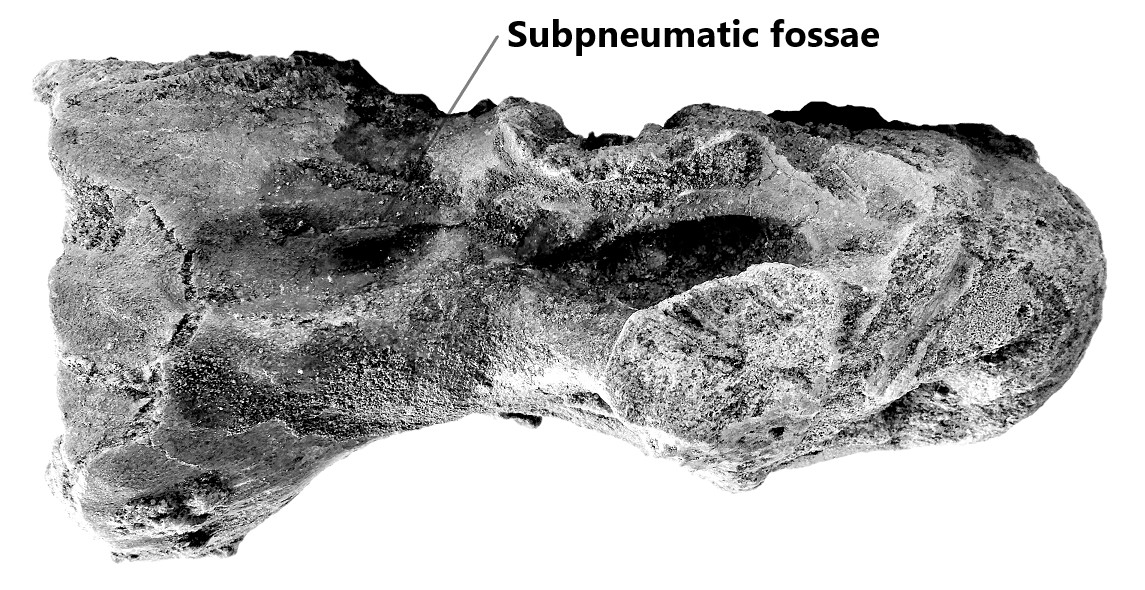
Figure 33. Cervical vertebra of Morocco Spinosaurid refer as Spinosaurus dorsojuvencus in right lateral view, contain subpneumatic fossae at distal centrum.

Figure 34. Cervical vertebra of Morocco Spinosaurid refer as Spinosaurus dorsojuvencus in ventral view. The condyle height composes about 32.7%± of total vertebra length, and no obvious ventral keel develop at bottom of the centrum.
![Estimate size of each cervical vertebra[8] in each position (in left lateral view and ventral view). One of the obvious feature is Spinosaurus dorsojuvencus show a very broad centrum at posterior cervical vertebra position.](https://petrifiedembryology.files.wordpress.com/2022/04/fig-35-note-s.jpg)
Figure 35. Estimate size of each cervical vertebra[8] in each position (in left lateral view and ventral view). One of the obvious feature is Spinosaurus dorsojuvencus show a very broad centrum at posterior cervical vertebra position.
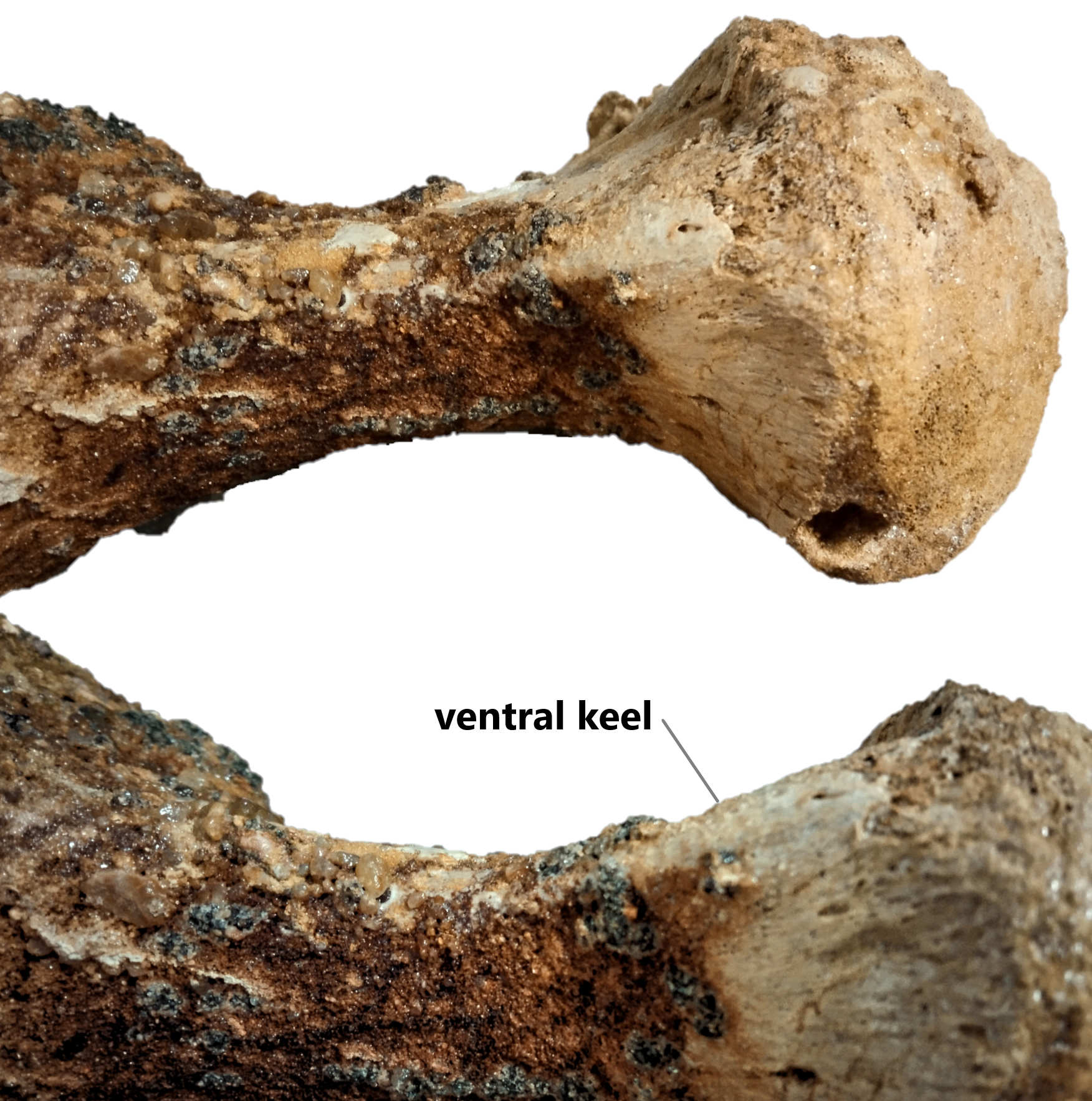
Figure 36. Ventral view of mid dorsal vertebra tentatively refers as Spinosaurus dorsojuvencus. Ventral keel of Spinosaurus dorsojuvencus only start develop at anterior dorsal vertebra and probably end at mid dorsal vertebra with ventral keel is non-sharp surface.
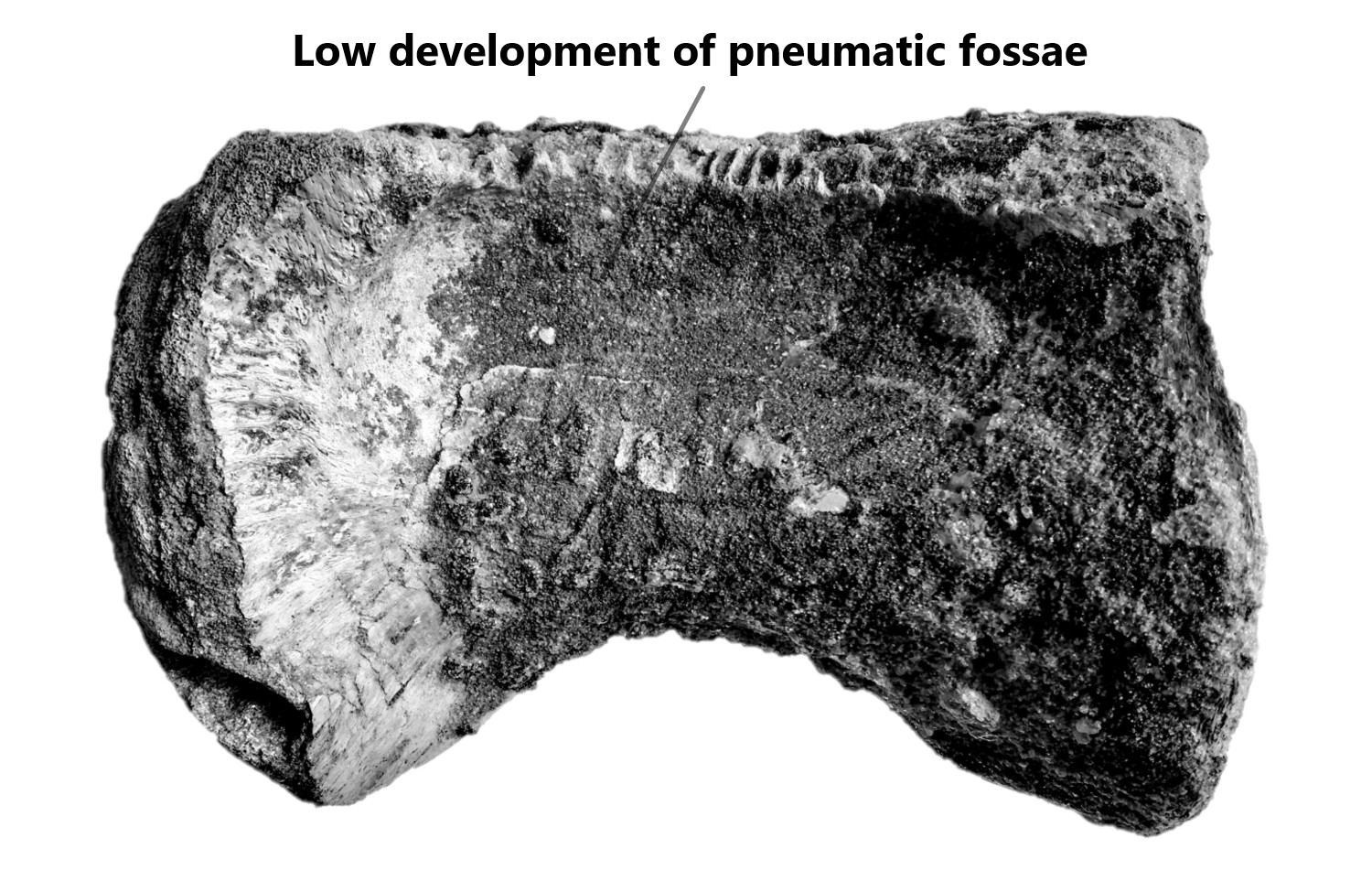
Figure 37. Left lateral view of mid dorsal vertebra tentatively refers as Spinosaurus dorsojuvencus. The vertebra centrum appears low or no development in pneumatic fossae.
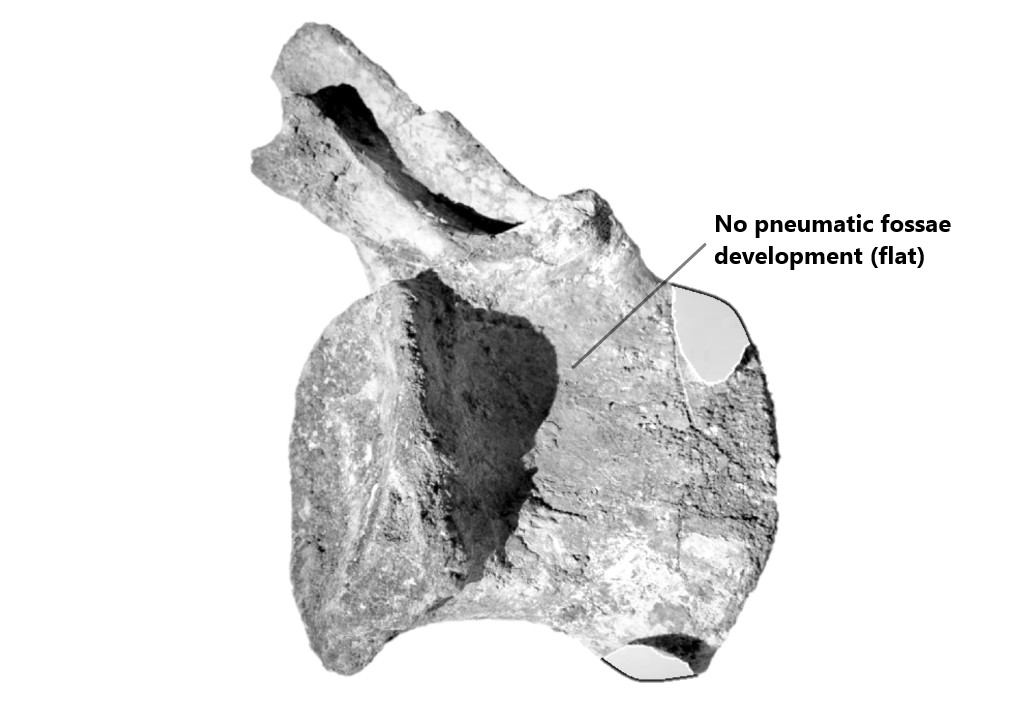
Figure 38. Right lateral view of mid caudal (tail) vertebra tentatively refers as Spinosaurus dorsojuvencus. No development of pneumatic fossae can be observed at surface of vertebra centrum.
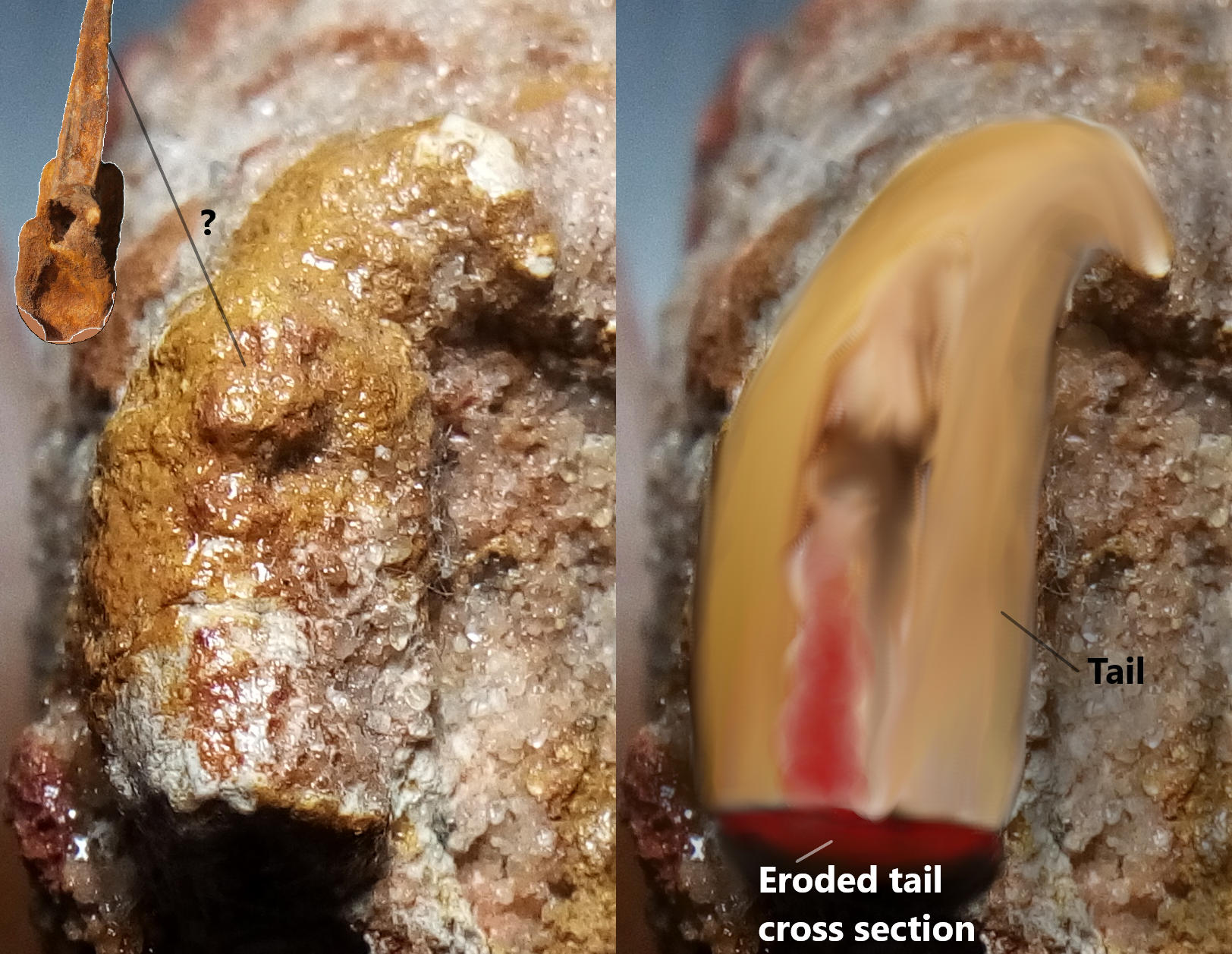
Figure 39. Dorsal view (top view) of partial preserved distal tail section of embryo Spinosaurus dorsojuvencus EMB1MORO. The hump section might indicate the caudal tail vertebra of Spinosaurus dorsojuvencus probably also contain a very long neural spine.
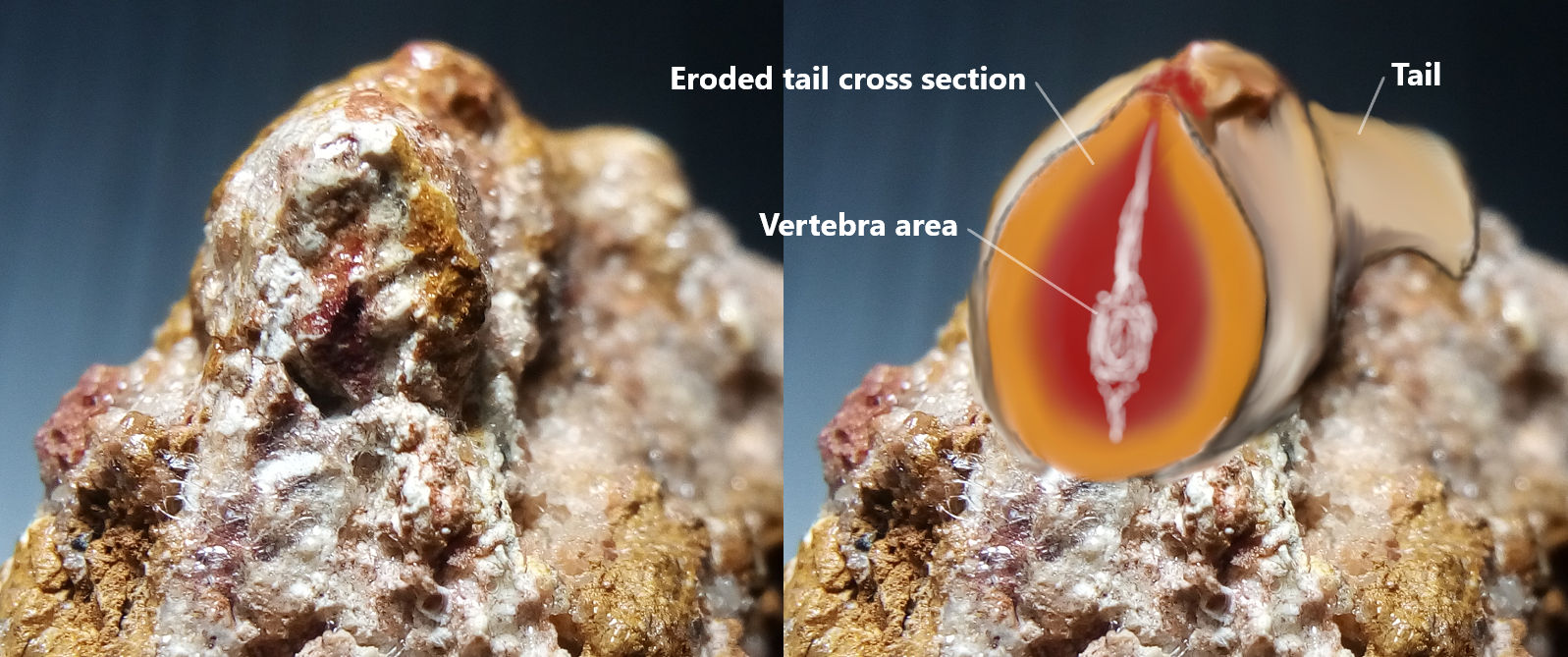
Figure 40. Anterior view on eroded area (cross section) of partial preserved distal tail section of embryo Spinosaurus dorsojuvencus EMB1MORO. The middle black hole belongs to vertebra area that did not preserved in this specimens.
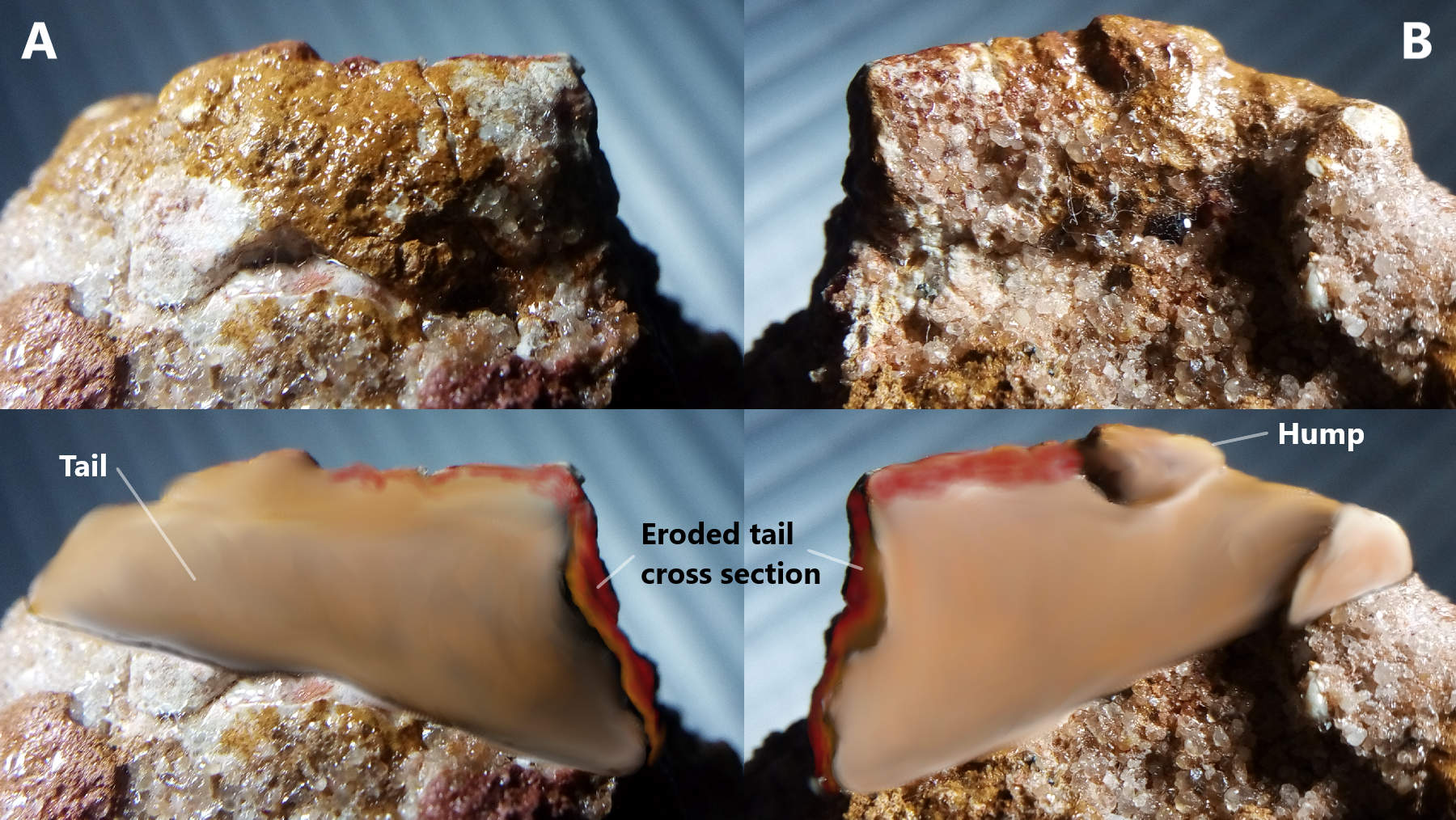
Figure 41. Partial preserved distal tail section of embryo Spinosaurus dorsojuvencus EMB1MORO with its corresponding restoration image. From left to right: A. in right lateral view; B. in left lateral view.
Relationship between Spinosaurid with Sauropodomorpha
For a long time, Spinosaurid have long been classified under the Megalosauroidea based on its theropods behavior, but if you look closely at their vertebra morphology, you’ll see they are more Prosauropod-like than the typical short neck theropods. Some Spinosaurid were also further develop in cervical and caudal pneumaticity that often seen in the vertebrae of sauropod (refer Figure 44). Like Dilophosaurus wetherilli, the vertebra morphologies of Spinosaurid appear to be more closely related with Sauropodomorpha than Megalosauroidea, this is how Aliacollisauria create to group between them with one of the group are likely evolve into omnivores or carnivores and the other herbivores (Figure 47). By comparison on cervical vertebrae of Plateosaurus, Spinosaurus and Dilophosaurus will easily detect its relationship. Here we take a look on the few example below.
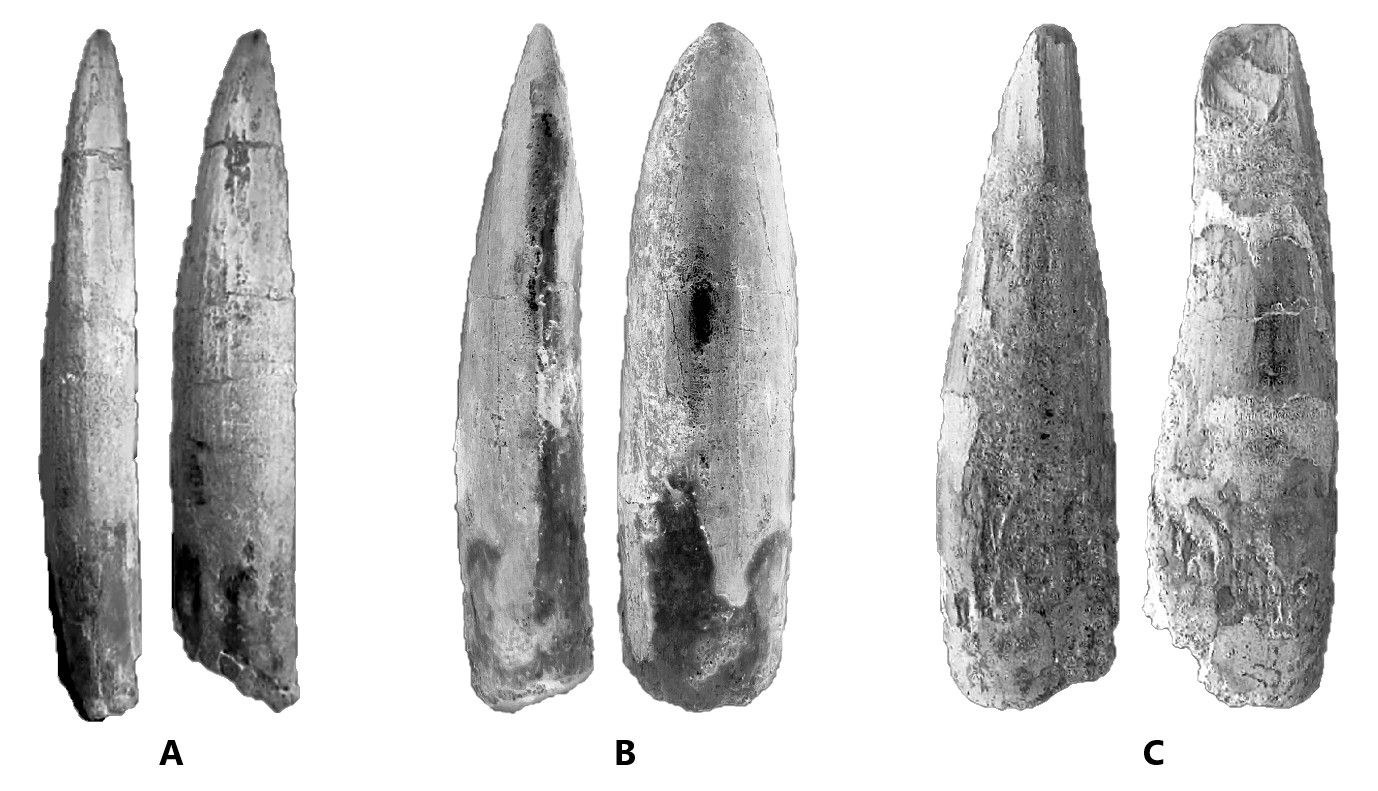
Figure 42. Isolated Sauropod tooth compare to Spinosaurid tooth from Kem Kem bed of Morocco. From left to right: A. Type I isolated Sauropod tooth from Kem Kem; B. Type II isolated Sauropod tooth from Kem Kem; and C. Spinosaurid tooth from Kem Kem.
![Comparison of radius bone (forelimb) between Sauropodomorpha with Spinosaurid. From left to right: A. Plateosaurus (Prosauropod)[9]; B. Spinosaurus (Spinosaurid); and C. Zby atlanticus (Sauropod)[10].](https://petrifiedembryology.files.wordpress.com/2022/04/fig-43-note-s.jpg)
Figure 43. Comparison of radius bone (forelimb) between Sauropodomorpha with Spinosaurid. From left to right: A. Plateosaurus (Prosauropod)[9]; B. Spinosaurus (Spinosaurid); and C. Zby atlanticus (Sauropod)[10].
![Comparison of Spinosaurid vertebra with Sauropod. From top left to bottom right: A. 3rd cervical vertebra (MPEF-PV 3301/12)[11] of Bagualia alba; B. 4th cervical vertebra (MPEF-PV 3301/11)[11] of Bagualia alba; C. Cretaceous Sauropod dorsal vertebra PMU 24708[12]; D. 2nd cervical vertebra (GCE2105098997A) of Spinosaurus dorsojuvencus; E. 5th cervical vertebra (GCE2104138334) of Spinosaurus dorsojuvencus; and F. Anterior dorsal vertebra of Spinosaurus aegyptiacus neotype (FSAC-KK 11888)[4].](https://petrifiedembryology.files.wordpress.com/2022/04/fig-44-note-s.jpg)
Figure 44. Comparison of Spinosaurid vertebra with Sauropod. From top left to bottom right: A. 3rd cervical vertebra (MPEF-PV 3301/12)[11] of Bagualia alba; B. 4th cervical vertebra (MPEF-PV 3301/11)[11] of Bagualia alba; C. Cretaceous Sauropod dorsal vertebra PMU 24708[12]; D. 2nd cervical vertebra (GCE2105098997A) of Spinosaurus dorsojuvencus; E. 5th cervical vertebra (GCE2104138334) of Spinosaurus dorsojuvencus; and F. Anterior dorsal vertebra of Spinosaurus aegyptiacus neotype (FSAC-KK 11888)[4].
Some comparisons have been discussed in the third volume of Petrified Embryology (Volume 3) before, especially the comparison of the pedal unguals (claw), humerus, femur, and dorsal vertebra between Spinosaurid with Sauropodomorpha, so I will not discuss here again and please refer that book if you wish to.
Figure 43 shows an interesting comparison of the radius bone (forelimb) between Plateosaurus with Spinosaurus. I was predicted for a long time that the radius bone of Spinosaurus were be very similar to Plateosaurus but lack of evidence, until I found the specimen Alpha Male 9109, which helped me to quickly identify the radius specimen of GCE2104204947 is one of the associated specimens together with mid dorsal vertebra GCE2104133945. These lot of massive vertebra are actually a same individual and associated specimen! This is how I brought back the specimen Alpha Male 9109 for study its morphology. Alpha Male 9109 is special specimen that looks similar with Spinosaurus aegyptiacus neotype (FSAC-KK 11888) but has distinct features that can distinguish them into two distinct developmental lines.
By continue looking at the skull development of Dilophosaurus wetherilli, Plateosaurus trossingensis, and Suchomimus tenerensis below, although these three types of skulls show different in shape, but is due to different evolutionary line that evolve its own unique development feature along such a huge time, from Jurassic to Cretaceous. One of the obvious similarities is that their large external naris (nostrils) that cause dislocation of premaxilla. This unique feature also differs from typical theropods that have continuous premaxilla and maxilla connection. The second similarity is the elongation and crown development in nasal (see arrows in Figure 45). Third similarity is very low (may appear a traces or shape but no obvious hole) or no development in maxillary fenestra (a small hole in front of antorbital fenestra) in front of antorbital fenestra (a big hole in front of eye socket). A fourth similarity is their lacrimal (a small skull bone in front of eye socket) locate below the elongated nasal (a small skull bone at nostril area) skull bone. Note that I didn’t mention that Dilophosaurus, Plateosaurus, and Suchomimus are same genus but they are probably deriving from similar ancestor that evolved into different family line.
![Comparison of various skull that recommended to group under Order Aliacollisauria. From top to bottom: A. Skull of Dilophosaurus wetherilli (UCMP 77270)[13]; B. Skull of Plateosaurus trossingensis (NAAG_00011238)[14]; and C. Reconstructed skull (cast) of Suchomimus tenerensis (MNN GDF 500)[15].](https://petrifiedembryology.files.wordpress.com/2022/04/fig-45-note-s.jpg)
Figure 45. Comparison of various skull that recommended to group under Order Aliacollisauria. From top to bottom: A. Skull of Dilophosaurus wetherilli (UCMP 77270)[13]; B. Skull of Plateosaurus trossingensis (NAAG_00011238)[14]; and C. Reconstructed skull (cast) of Suchomimus tenerensis (MNN GDF 500)[15].
Unlike the Maniraptorans (raptor based of species), the prosauropod-like species dinosaur group under Aliacollisauria often contain dumbbell-shaped scapula, with large, and distinctively broad size at the distal end of scapula. Some species might develop a robust shape which probably related to its quadrupedal behavior.
![Comparison of scapula between species recommended group under Order Aliacollisauria. One of the typical structure morphology pose from Aliacollisauria is dumbbell-shaped scapula. From top to bottom: A. Dilophosaurus wetherilli[13]; B. Plateosaurus trossingensis[16]; and C. Suchomimus tenerensis (reconstructed)[17].](https://petrifiedembryology.files.wordpress.com/2022/04/fig-46-note-s.jpg)
Figure 46. Comparison of scapula between species recommended group under Order Aliacollisauria. One of the typical structure morphology pose from Aliacollisauria is dumbbell-shaped scapula. From top to bottom: A. Dilophosaurus wetherilli[13]; B. Plateosaurus trossingensis[16]; and C. Suchomimus tenerensis (reconstructed)[17].
Here we simplify again some characteristics in Order of Aliacollisauria for easy reference and classification.
Order Aliacollisauria
Etymology: “Alia” (Latin) meaning a distinct; “colli” (Latin) meaning neck; “sauria” (New Latin) meaning a division of Reptilia.
Type Family or suborder: Spinosauridae, Sauropodomorpha
Diagnosis: A group of Omnivorous (in early-stage, differentiation into carnivore and herbivore in later stage evolution) dinosaurs with iconic elongated neck and skull; consist of a robust structure of humerus and femur; partially curve type femur (for an earlier stage of species); an almost identical size of both proximal and distal of the large scapula (dumbbell-shaped scapula, broad shape at the distal end); mostly bipedal but sometimes quadrupedal due to having a large forearm; elongation of nasal (a skull bone near to the nostril) skull bone; skull bone lacrimal (a skull bone in front of eye orbit) below the nasal and etc.

Figure 47. Classification of Spinosauridae and Sauropodomorpha under Aliacollisauria.
And at last, based on similarity properties and characteristic under the same group of Aliacollisauria, Spinosaurid is likely contain 4 to 5 digit of phalanx (hand, finger bone) like Dilophosaurus or Plateosaurus!
References
1. Lacovara, K.J. The Spinosaurus skeleton was mounted at the Bavarian State Collection of Paleontology in Munich. In April 1944, a British bomb destroyed the museum and all of Mr. Stromer’s dinosaurs. Researchers have incorporated the lost fossil into a new digital model based on Mr. Stromer’s drawings. The New York Times. https://www.nytimes.com/2014/09/12/science/a-nomads-find-helps-solve-the-mystery-of-the-spinosaurus.html (2014)
2. Dal Sasso, C., Maganuco, S., Buffetaut, E., & Mendez, M.A.New Information On The Skull Of The Enigmatic Theropod Spinosaurus, With Remarks On Its Size And Affinities. Journal of Vertebrate Paleontology 25(4):890 (2005)
3. Sales, M.A.F, Schultz, C.L. Spinosaur taxonomy and evolution of craniodental features: Evidence from Brazil. PLoS ONE 12(11):e0187070 (2017)
4. Bigger Than T. Rex: Spinosaurus. PBS NOVA. National Geographic (2014)
5. Bindellini, G. Ca16 – Spinosaurus aegyptiacus neotype. Sketchfab. https://sketchfab.com/3d-models/ca16-spinosaurus-aegyptiacus-neotype-3cd5f6713e1f43f5bf466471416f06c8
6. Ibrahim N. et al. Tail-propelled aquatic locomotion in a theropod dinosaur. Nature (2020) doi.org/10.1038/s41586-020-2190-3
7. Bindellini, G. Ca31 – Spinosaurus aegyptiacus neotype. Sketchfab. https://sketchfab.com/3d-models/ca31-spinosaurus-aegyptiacus-neotype-6d0748a851994d6d86b84803743b75a4
8. Stromer, E. Vertebrae of Spinosaurus. Wikipedia
https://www.biodiversitylibrary.org/item/124817#page/131/mode/1up (1915)
https://en.wikipedia.org/wiki/File:Spinosaurus_vertebrae.jpg (by FunkMonk, 2014)
9. Lefebvre R, Allain R, Houssaye A, Cornette R. Disentangling biological variability and taphonomy: shapeanalysis of the limb long bones of the sauropodomorph dinosaur Plateosaurus. PeerJ 8:e9359 (2020) DOI:10.7717/peerj.9359
10. Mateus, O., Mannion, P.D., & Upchurch, P. Zby atlanticus, a New Turiasaurian Sauropod (Dinosauria, Eusauropoda) from the Late Jurassic of Portugal. Journal of Vertebrate Paleontology 34(3):618–634(2014) DOI:10.1080/02724634.2013.822875
11. Gomez, K.L., Carballido, J.L., & Pol, D. The axial skeleton of Bagualia alba (Dinosauria: Eusauropoda) from the Early Jurassic of Patagonia. Palaeontologia Electronica, 24(3):a37 (2021) https://doi.org/10.26879/1176
12. Poropat, S.F. Carl Wiman’s sauropods: The Uppsala Museum of Evolution’s collection. GFF, 135:1, 104-119 (2013) DOI:10.1080/11035897.2012.759268
13. Marsh, A.D., & Rowe, T.B. A comprehensive anatomical and phylogenetic evaluation of Dilophosaurus wetherilli (Dinosauria, Theropoda) with descriptions of new specimens from the Kayenta Formation of northern Arizona. Journal of Paleontology 94(S78) (2020) DOI:10.1017/jpa.2020.14
14. Lallensack, J.N., Teschner, E.M., Pabst, B., & Sander, P.M. New skulls of the basal sauropodomorph Plateosaurus trossingensis from Frick, Switzerland: Is there more than one species? Acta Palaeontologica Polonica 66 (1): 1–28 (2021) DOI:10.4202/app.00804.2020
15. Etemenanki3. Suchomimus skull cast, on display at the Museum of Ancient Life, Utah. Wikipedia. https://zh.wikipedia.org/wiki/File:Suchomimus_skull_Museum_of_Anchient_Life.jpg (2016)
16. Nau, D., Lallensack, J.N., Bachmann, U., and Sander, P.M. Postcranial osteology of the first early-stage juvenile skeleton of Plateosaurus trossingensis from the Norian of Frick, Switzerland. Acta Palaeontologica Polonica 65 (4): 679–708 (2020) DOI:10.4202/app.00757.202017. Zissoudisctrucker. Suchomimus skeleton mounted at the Children’s Museum of Chicago. This is the updated display for the 2018 renovation. Wikipedia. https://commons.wikimedia.org/wiki/File:CCM_Suchomimus_2018.jpg (2018)
Important Clarification: Figure 5, depicting the left radius (GCE2104204947), has been reassessed and determined to actually belong to the ulna. This correction is based on the acquisition of new bone data from the same source, identifying the previously labeled radius as an ulna. Apologize for any inconvenience caused by this error.
Update as of January 14, 2024, reflecting findings from the study conducted on January 6, 2023.
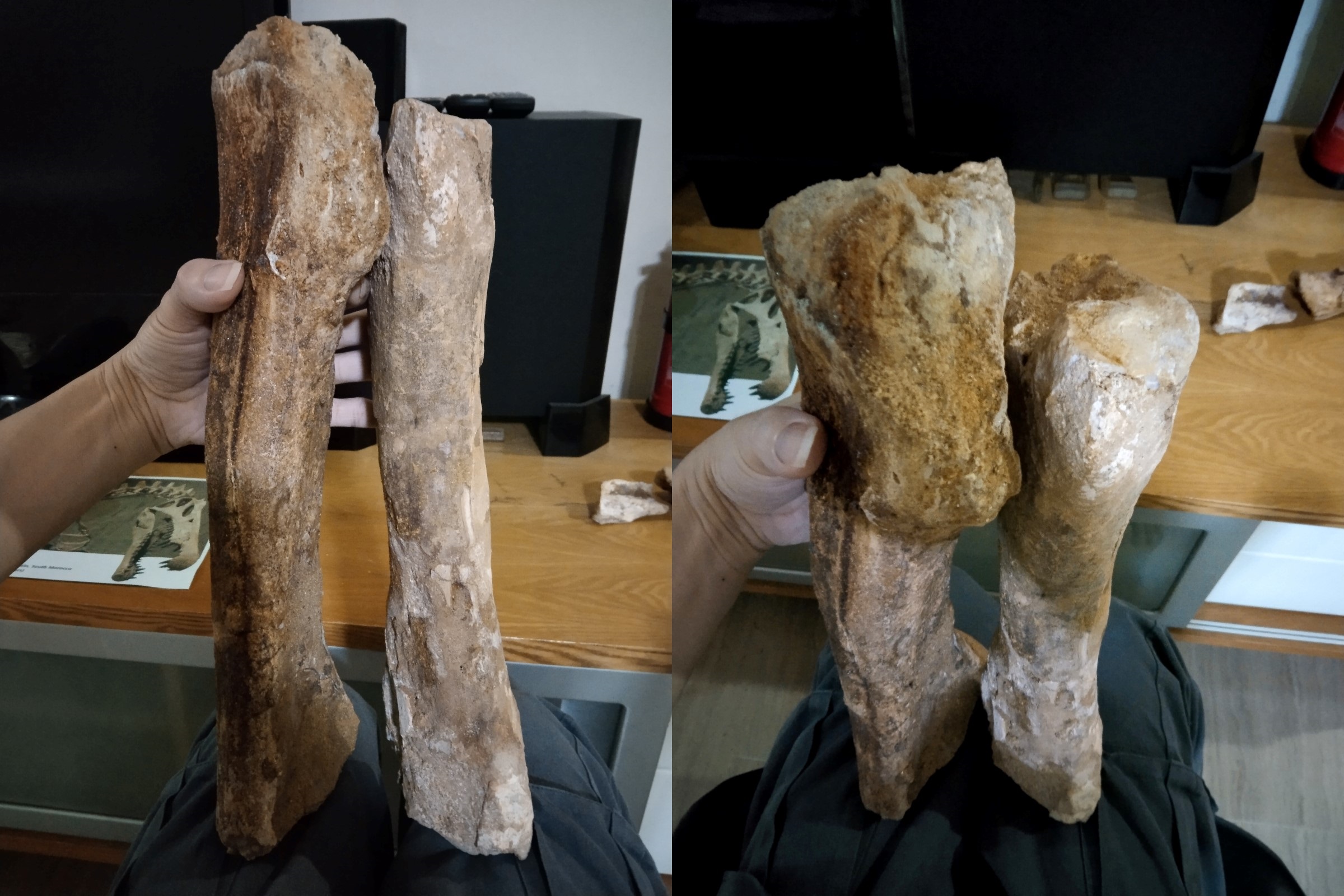

More issues available on home page






